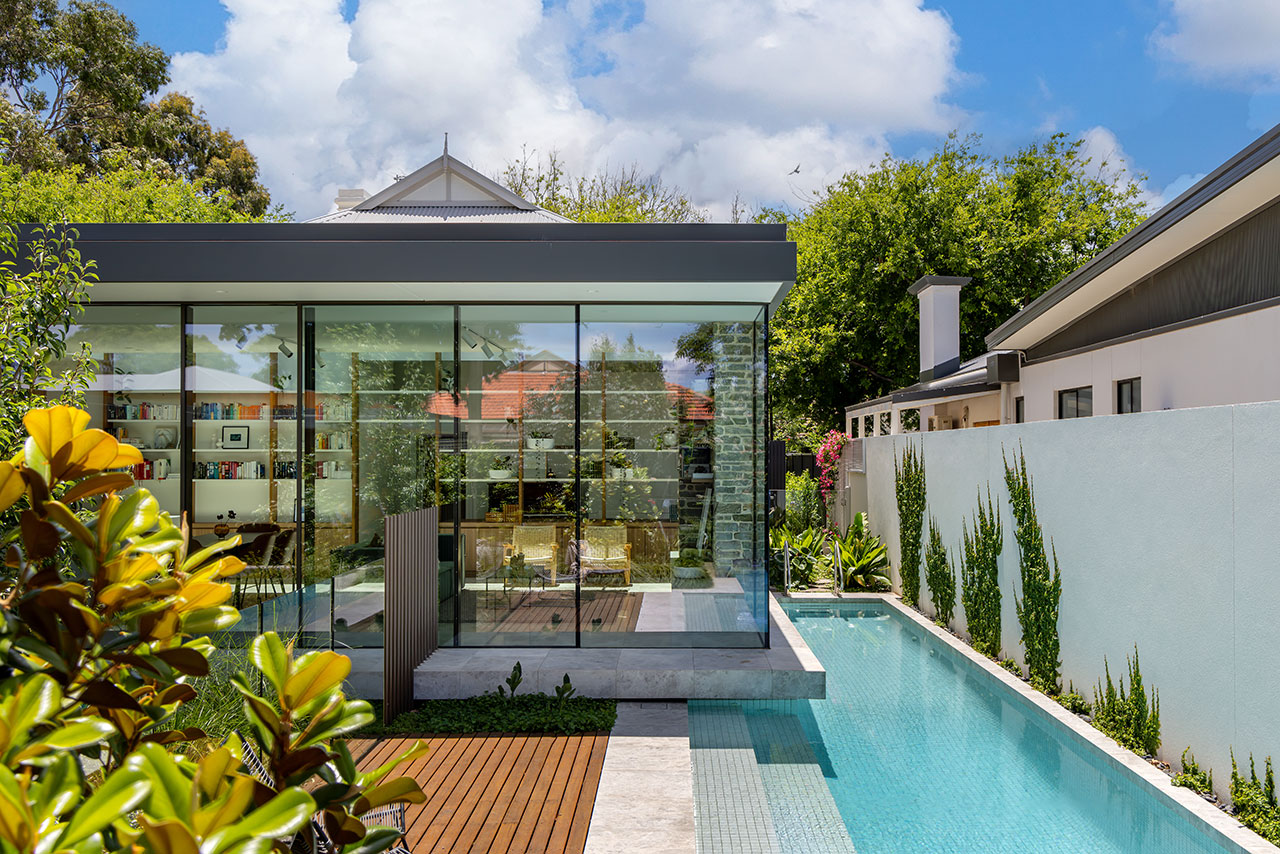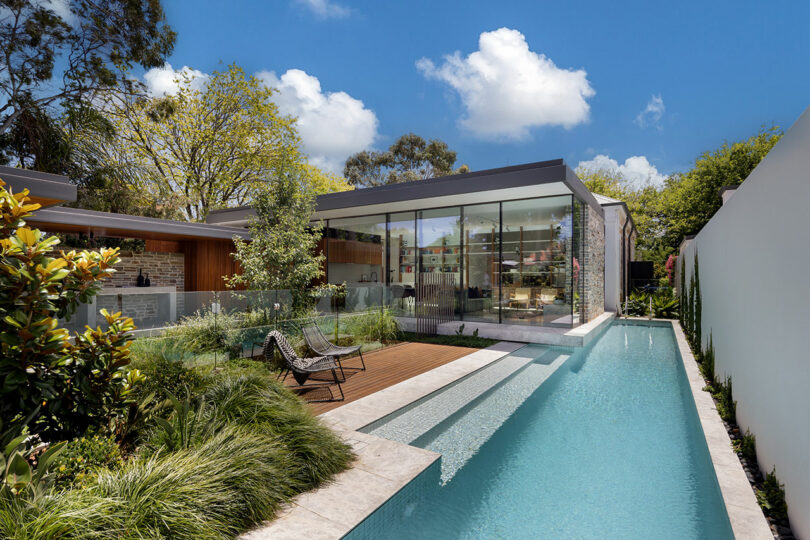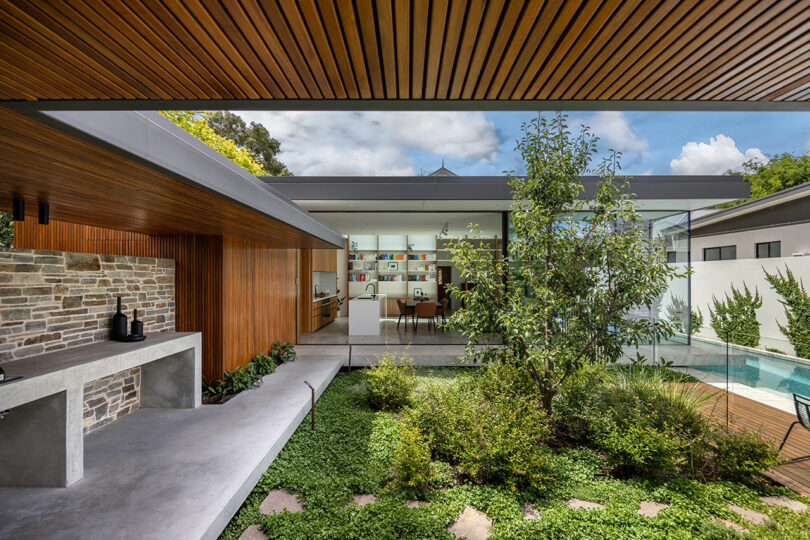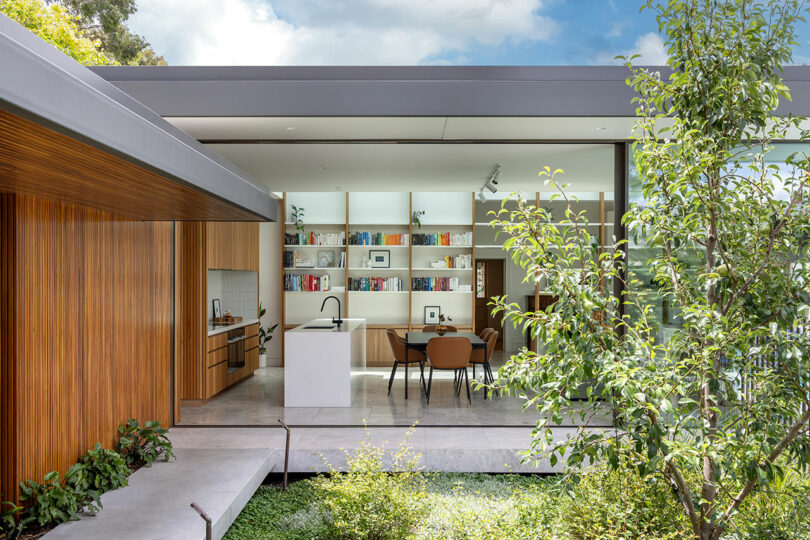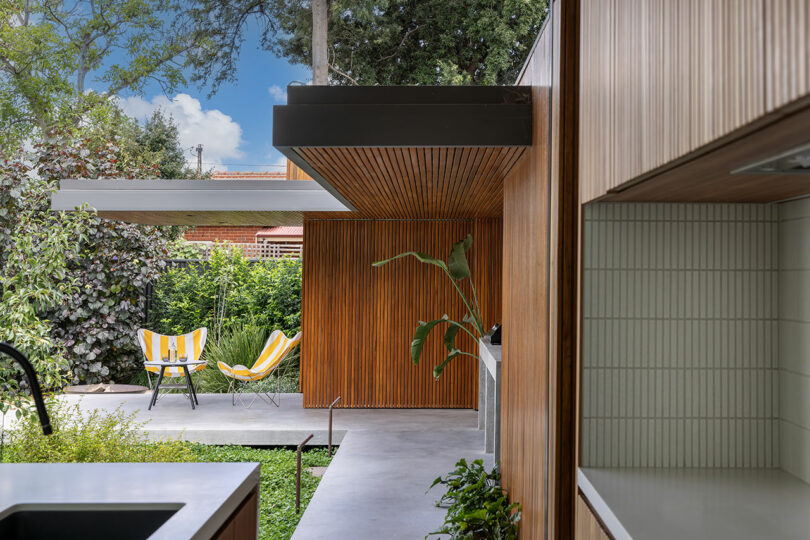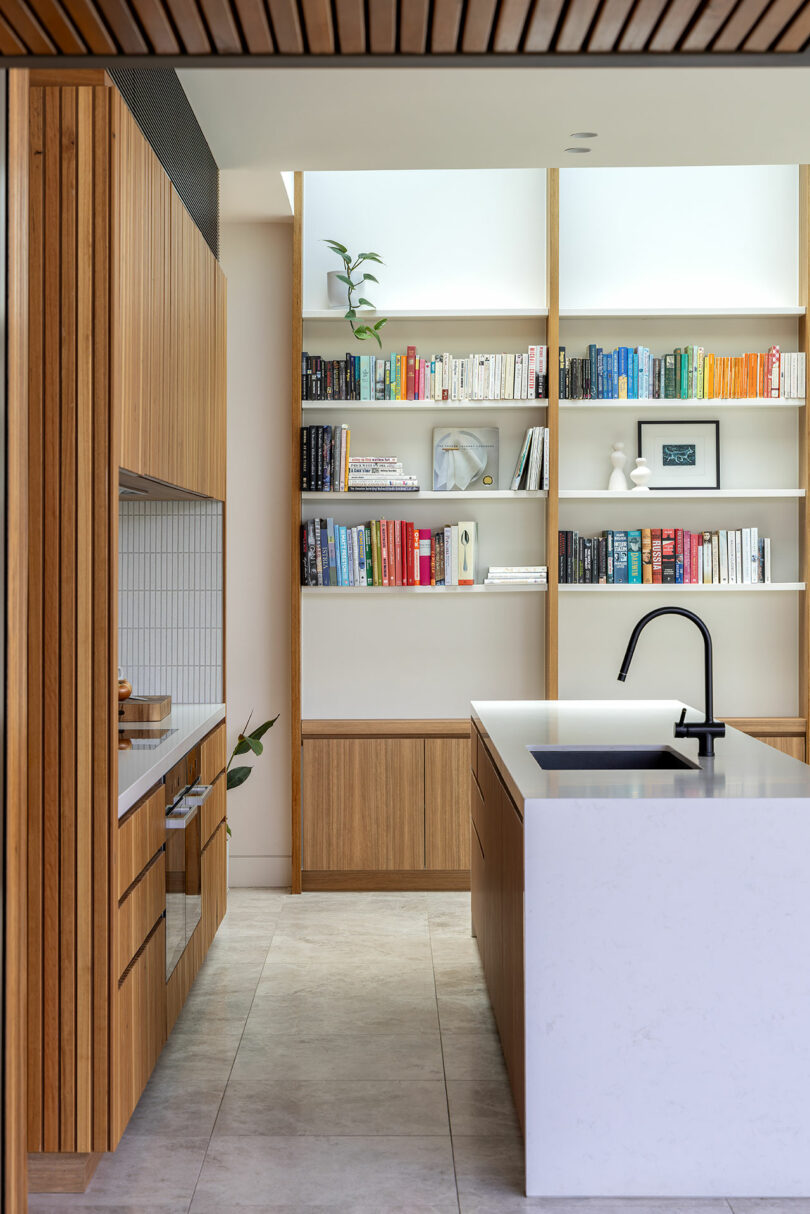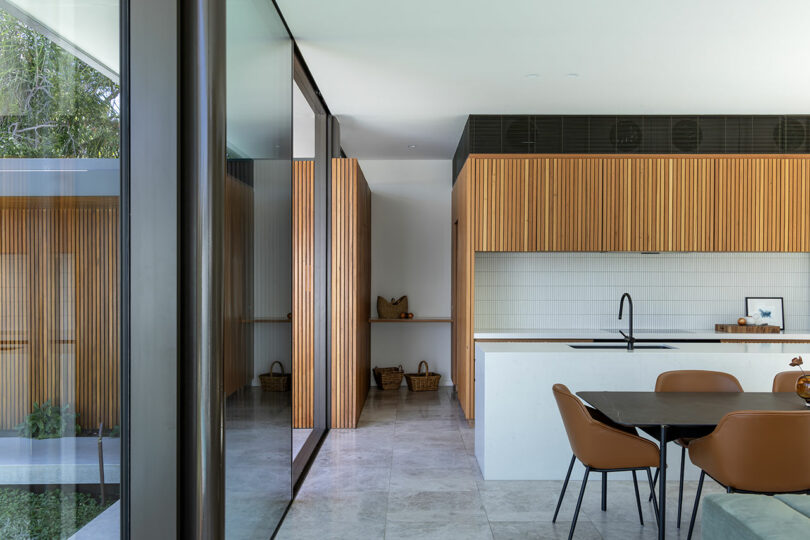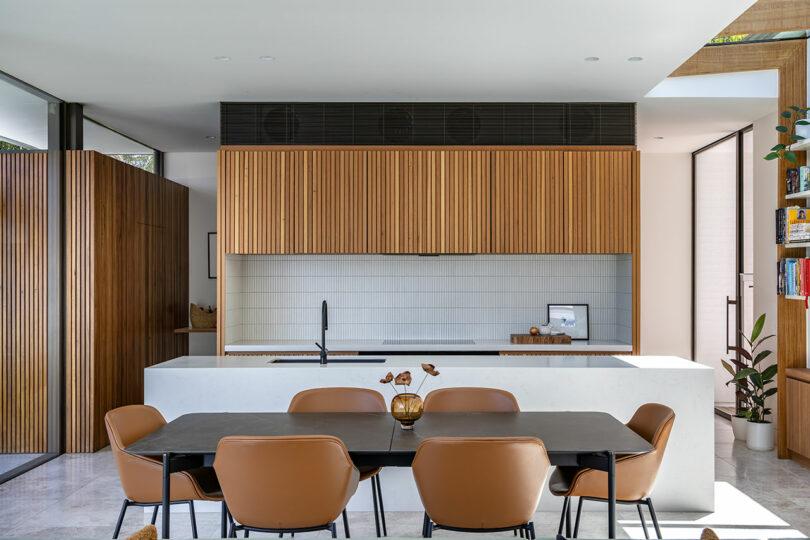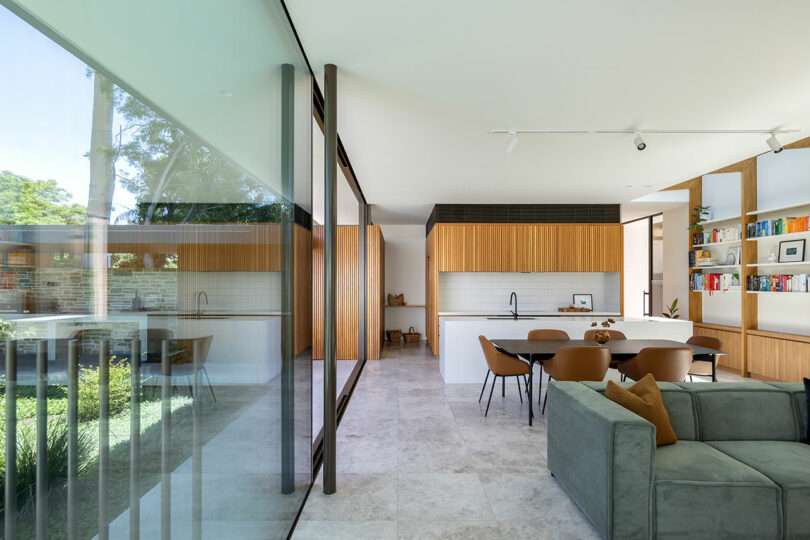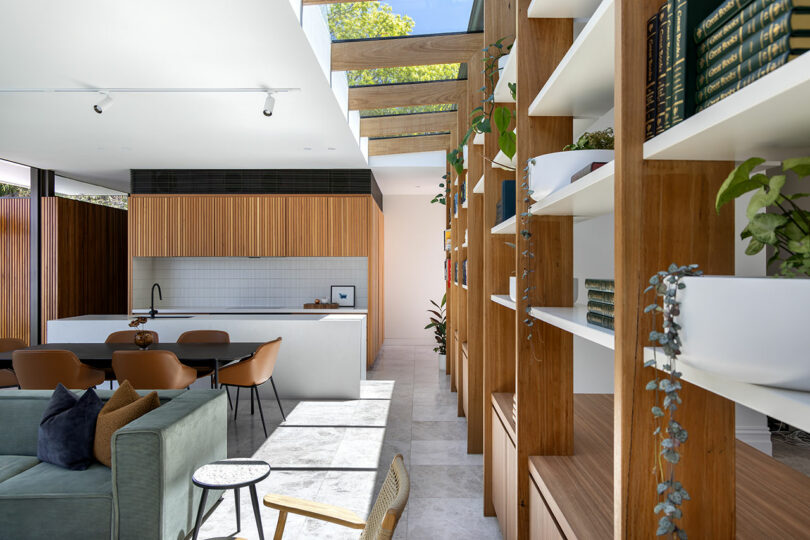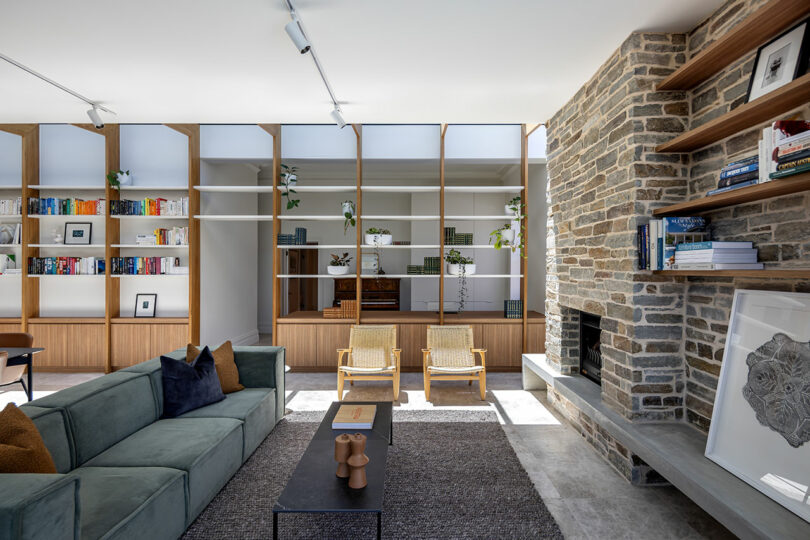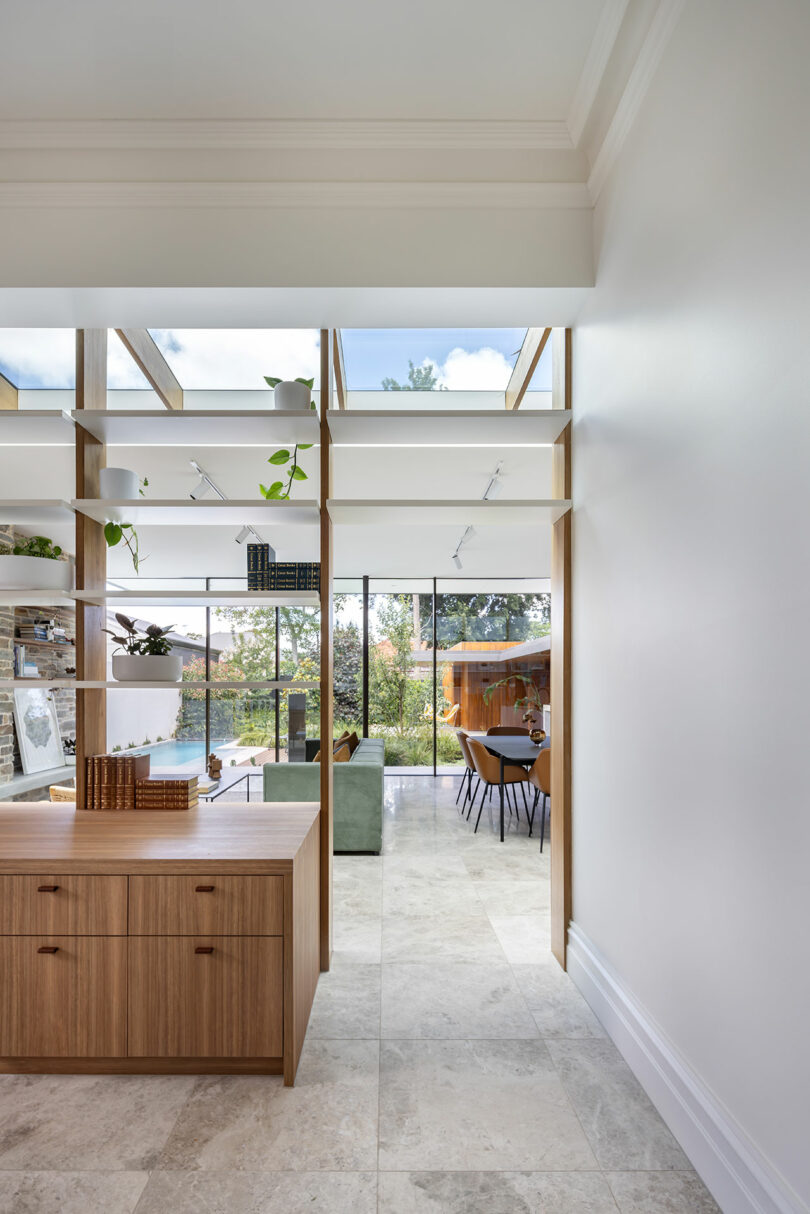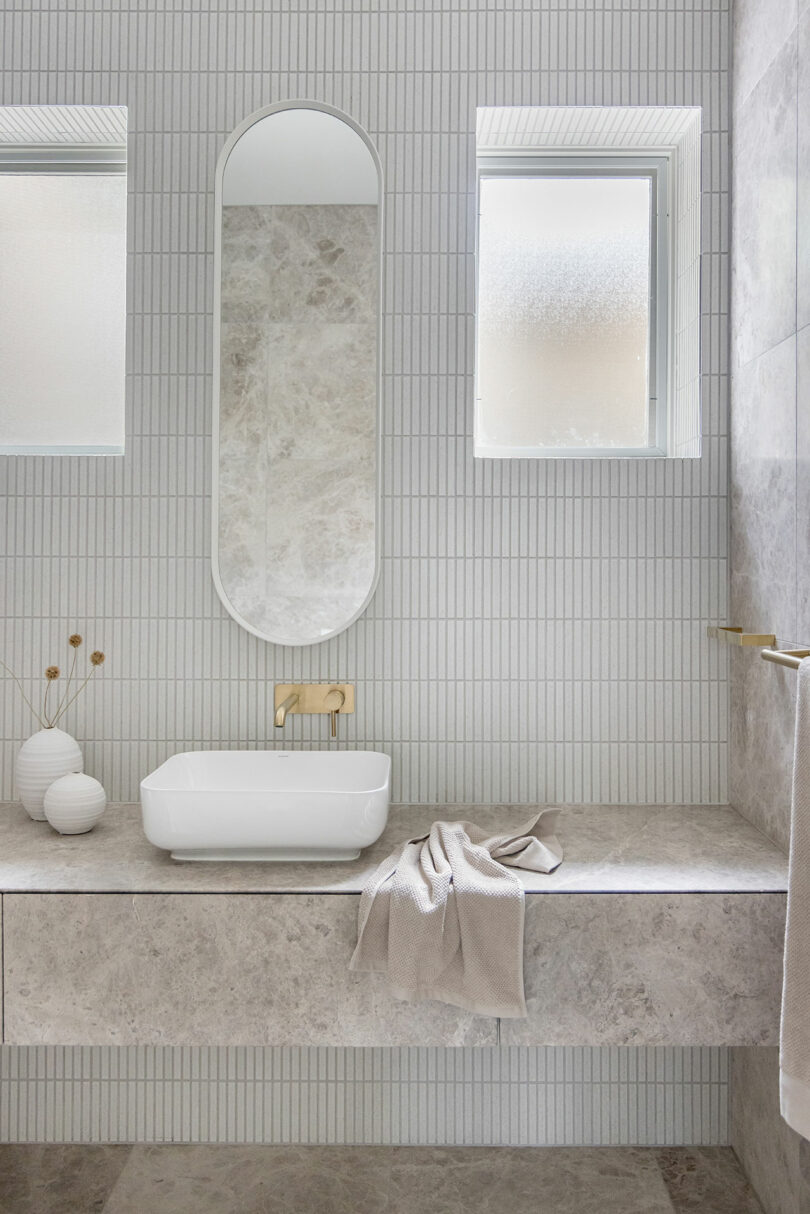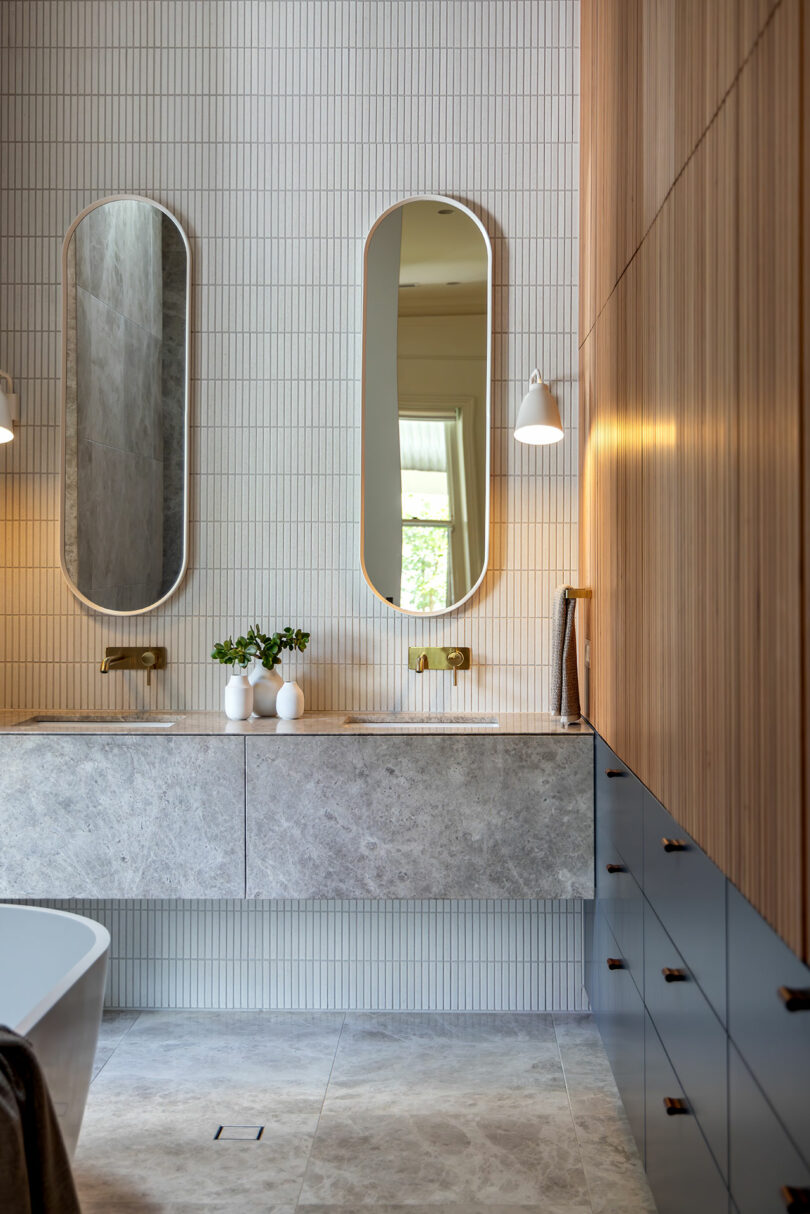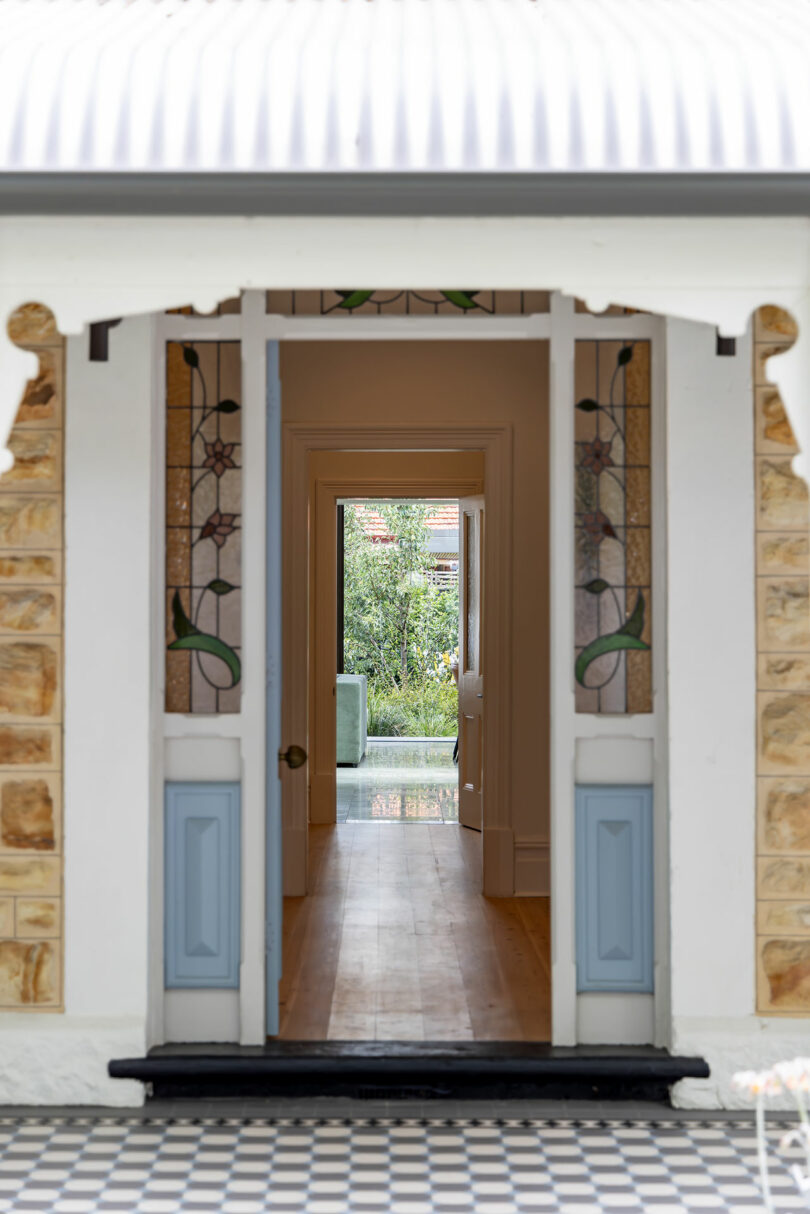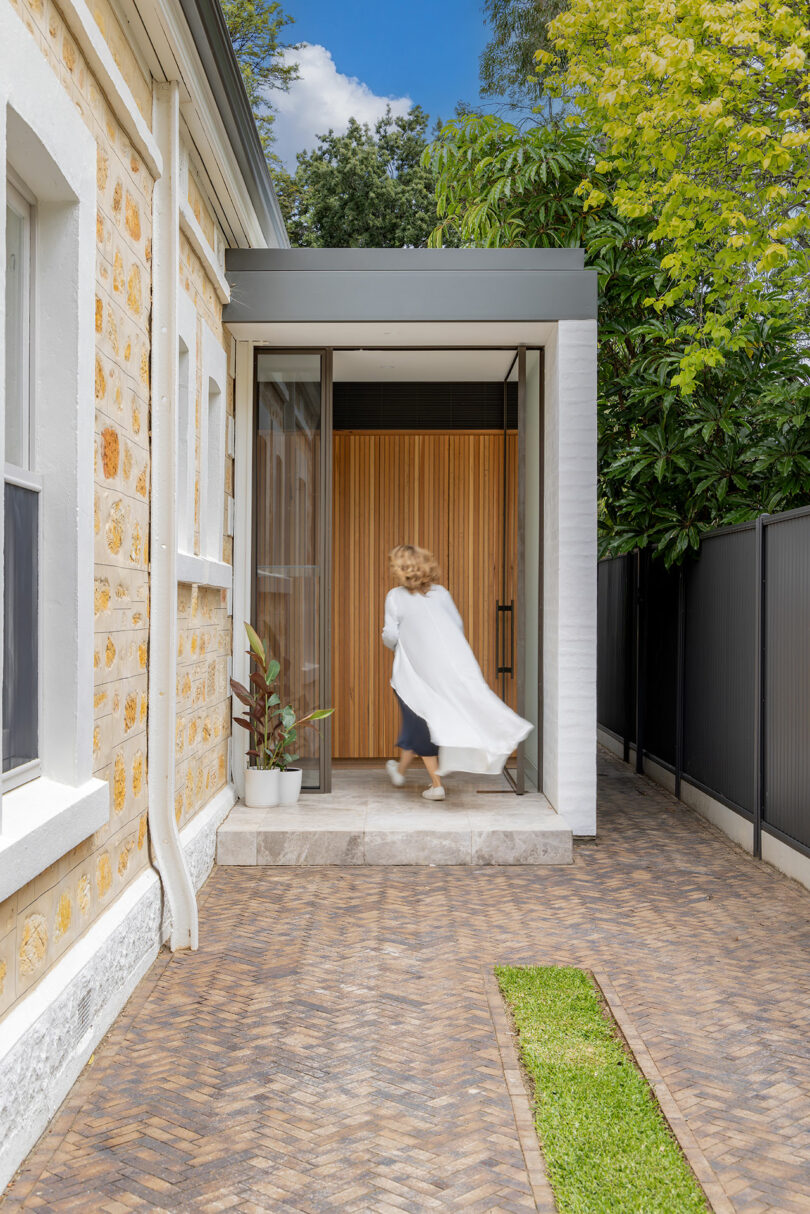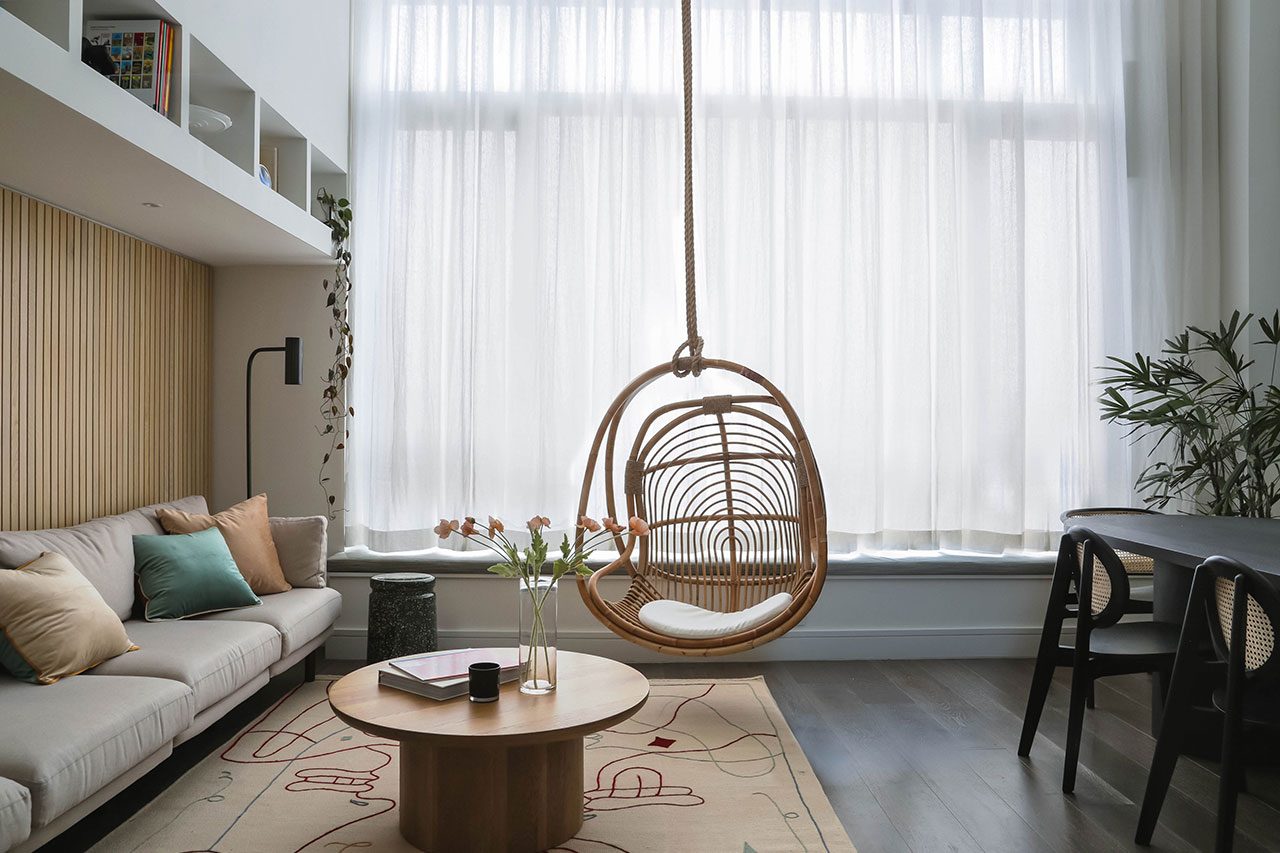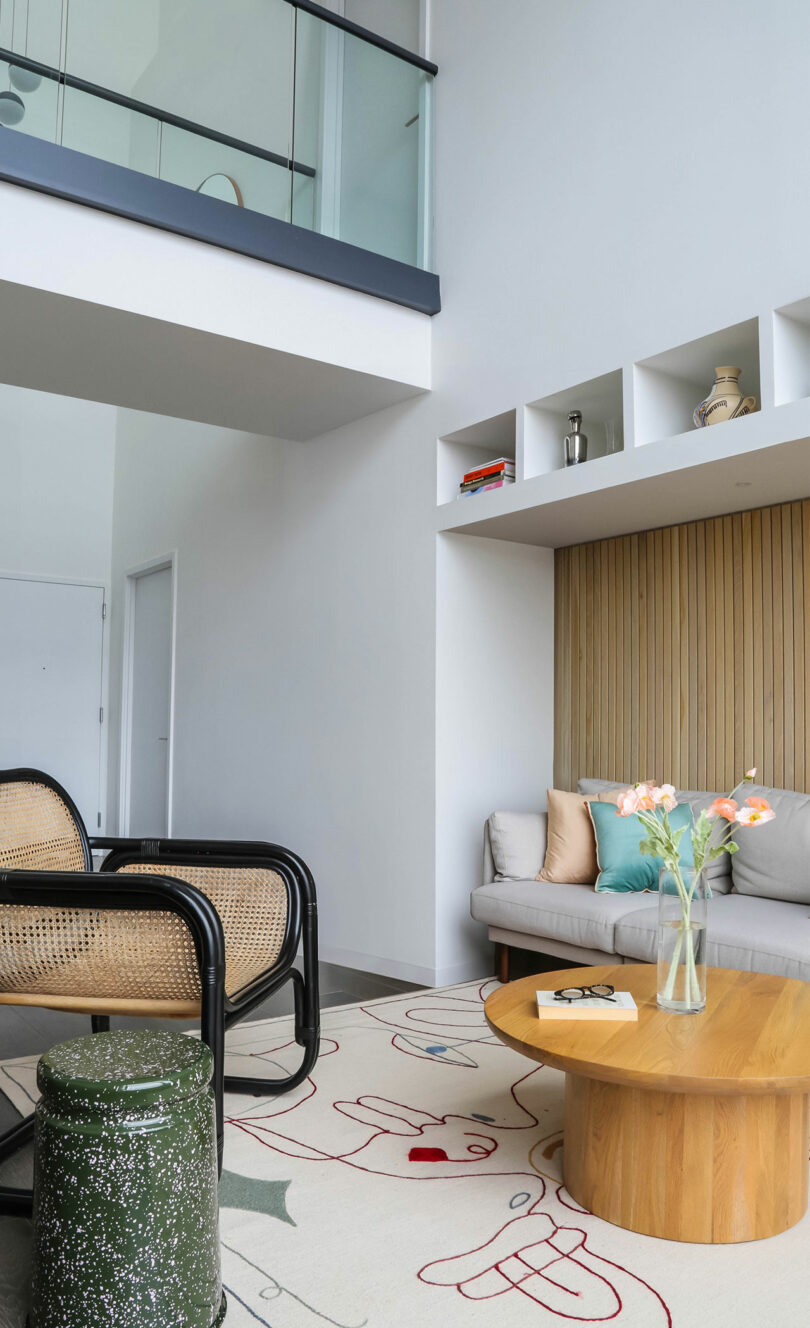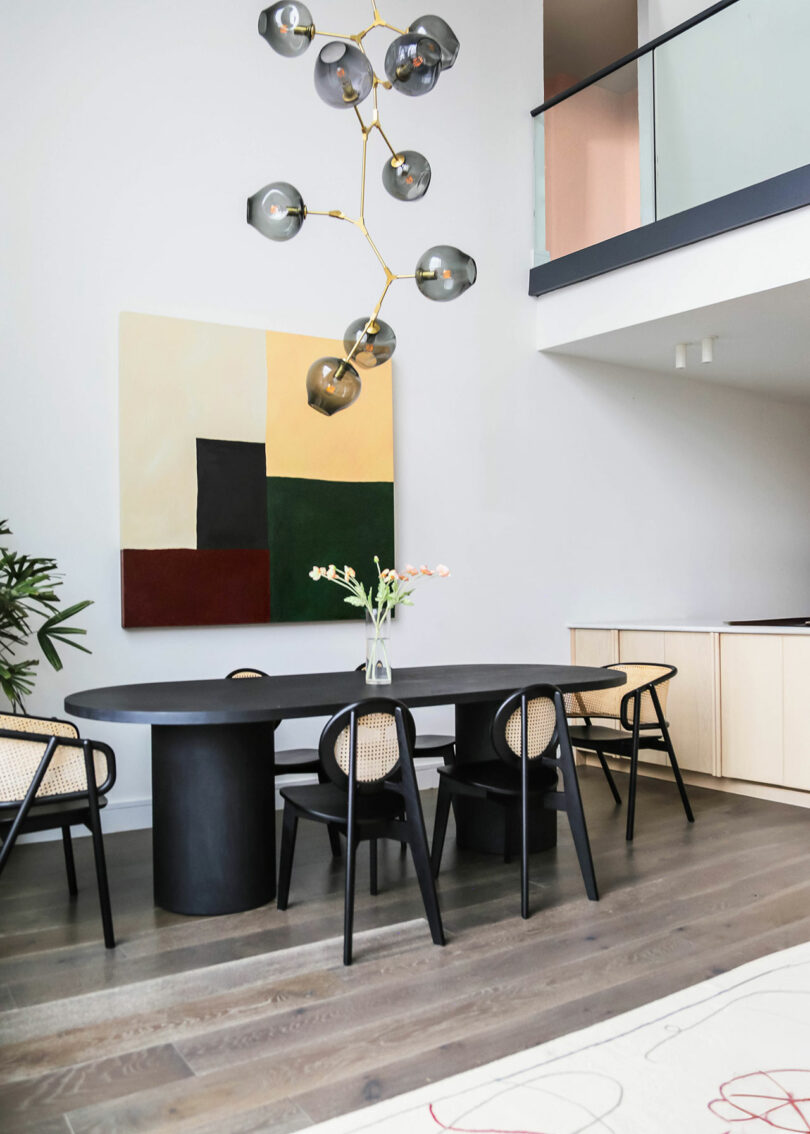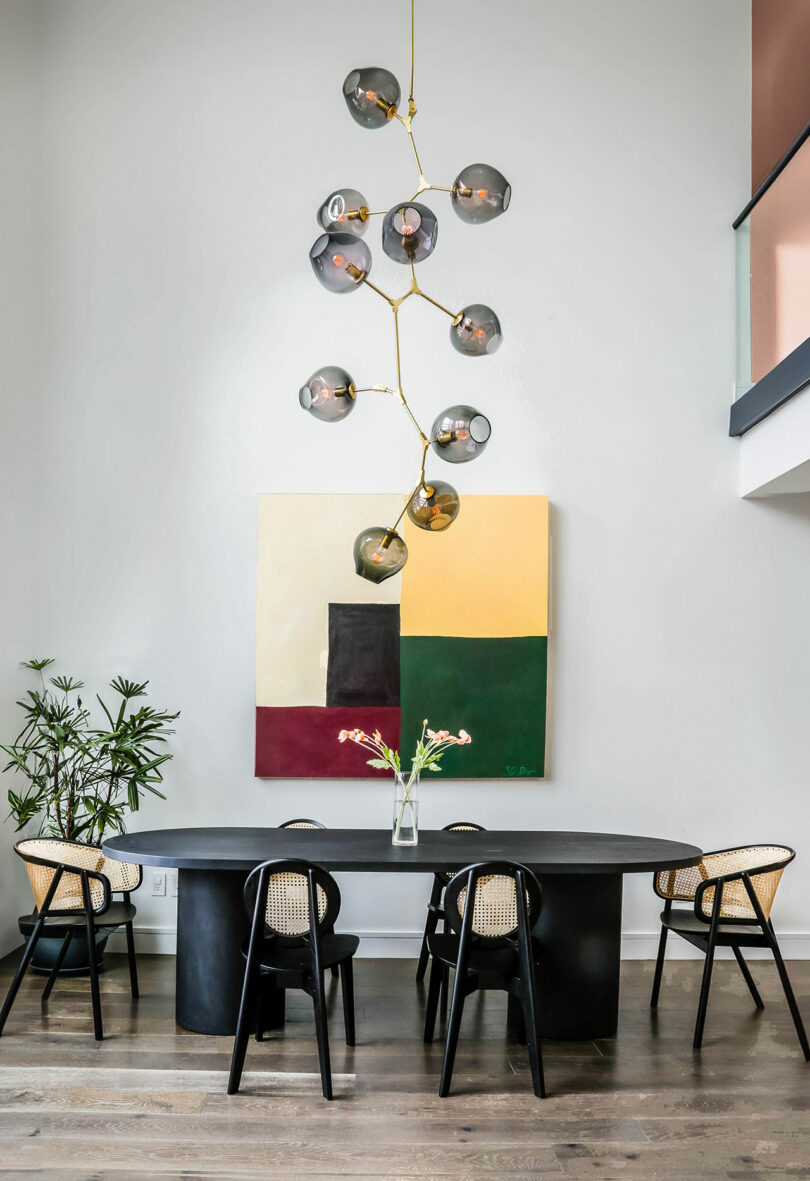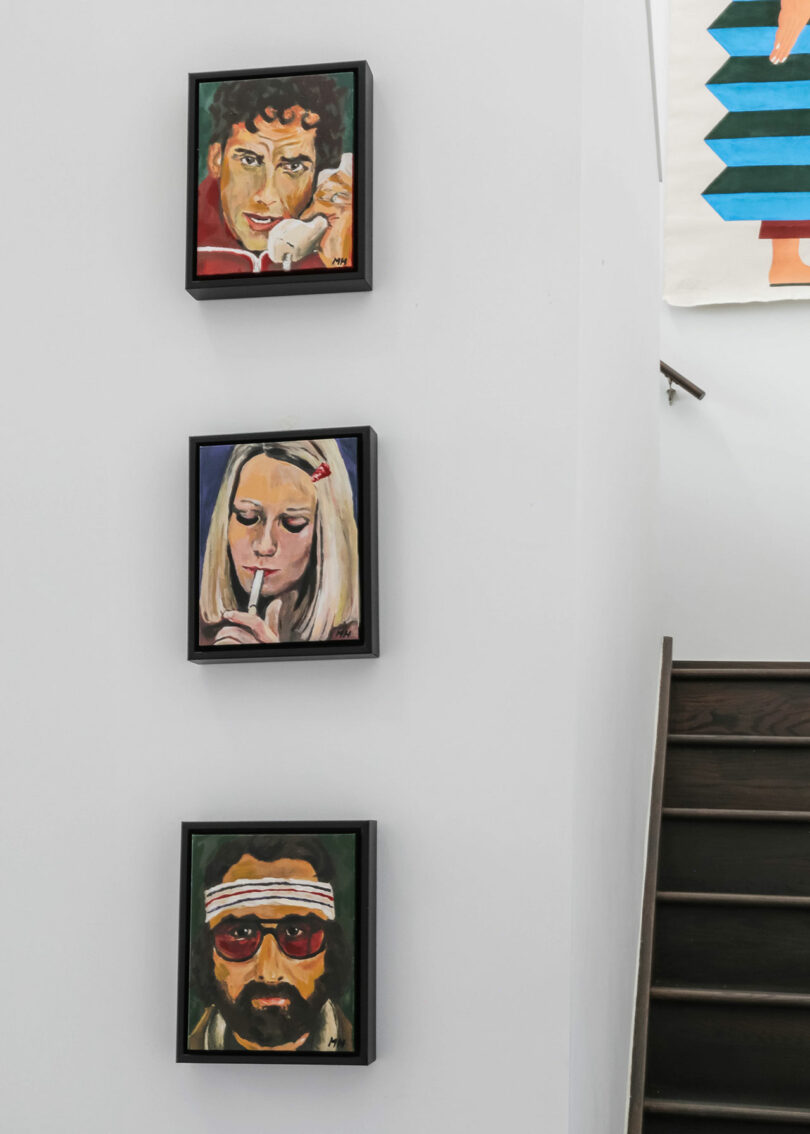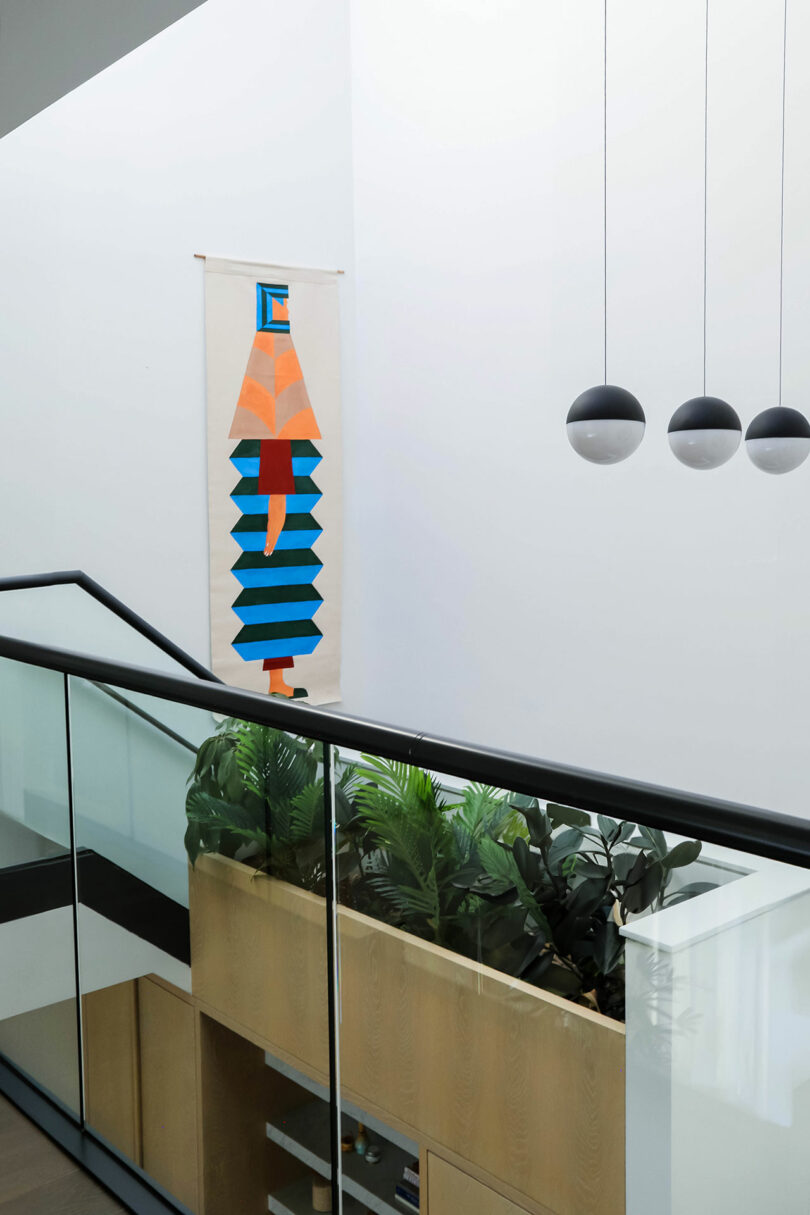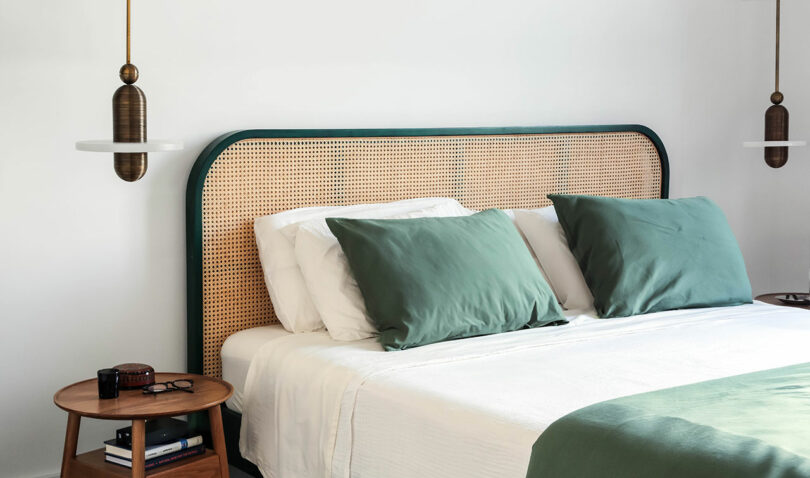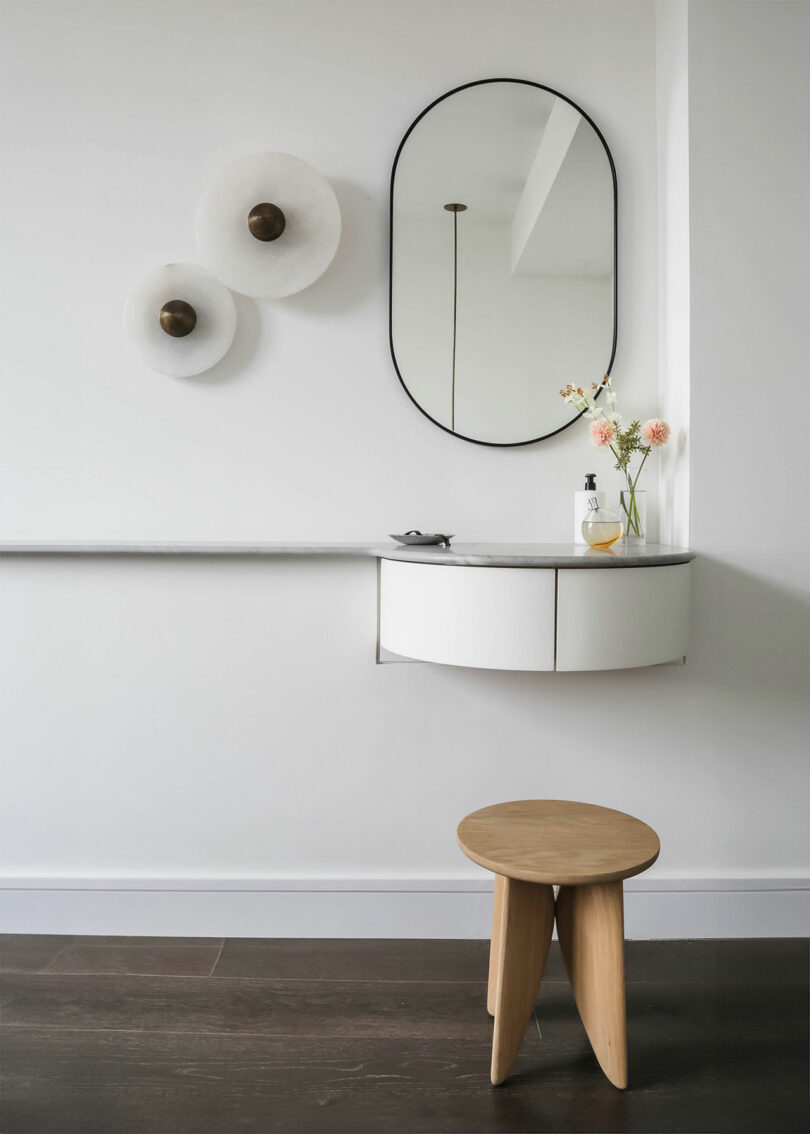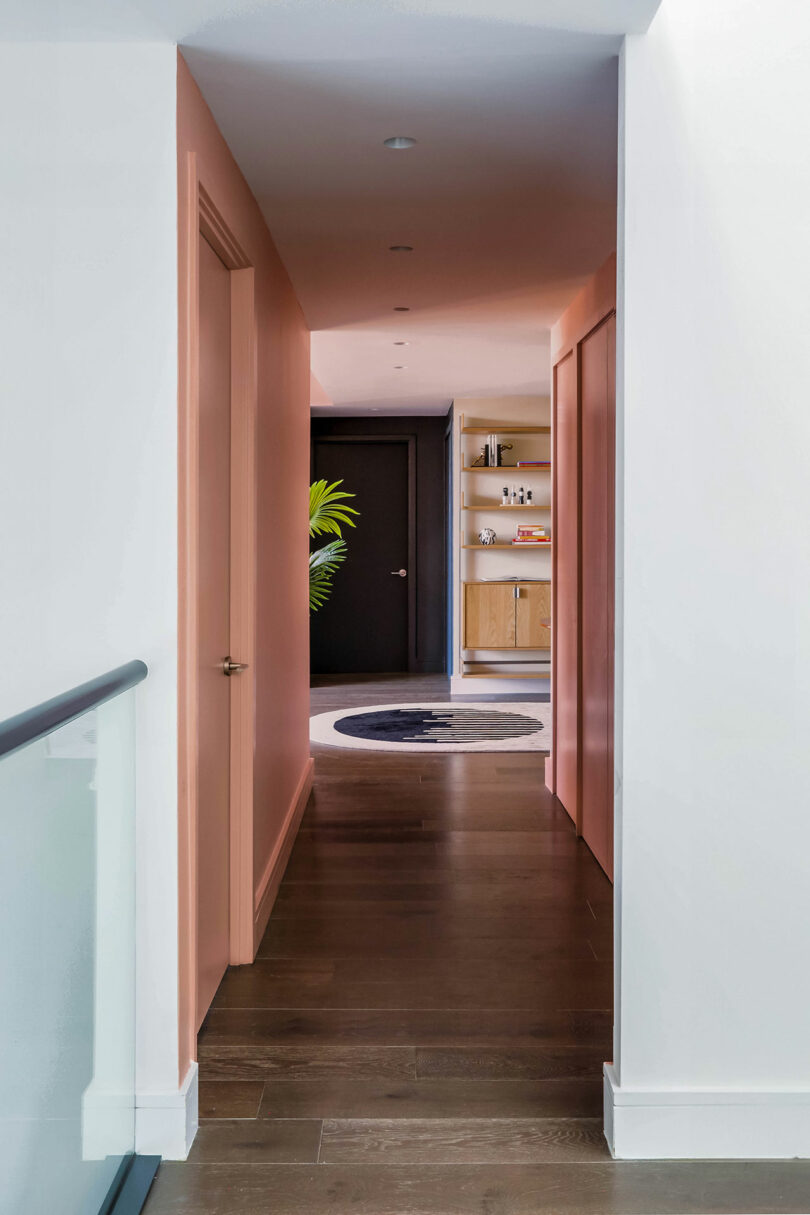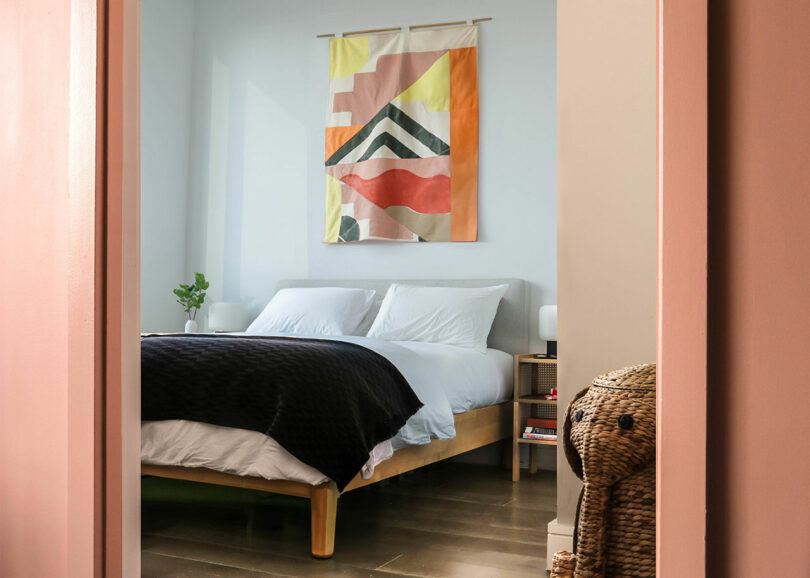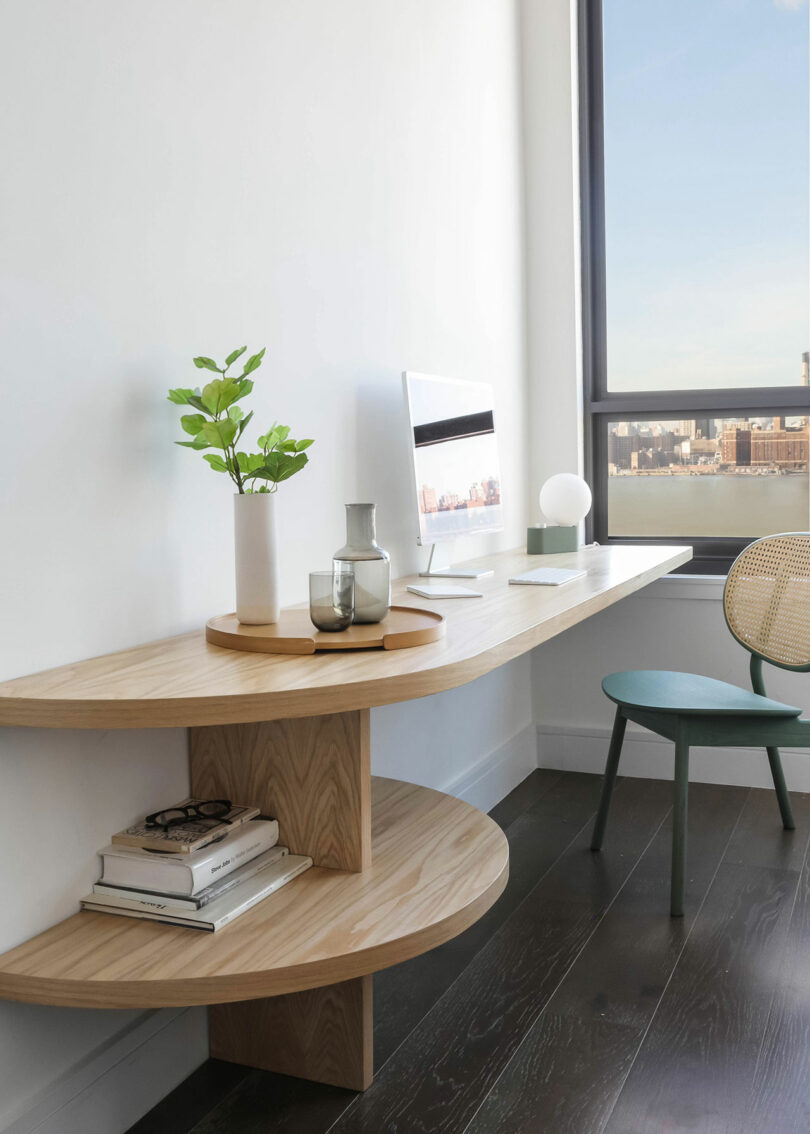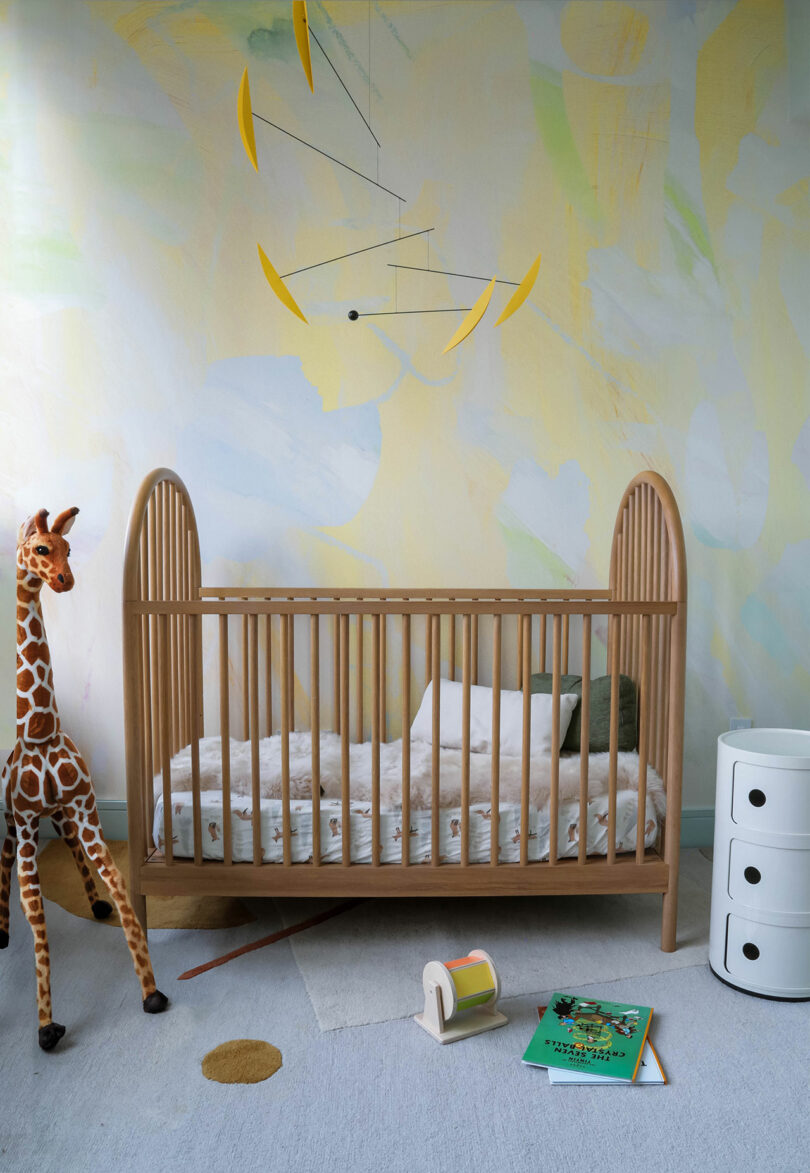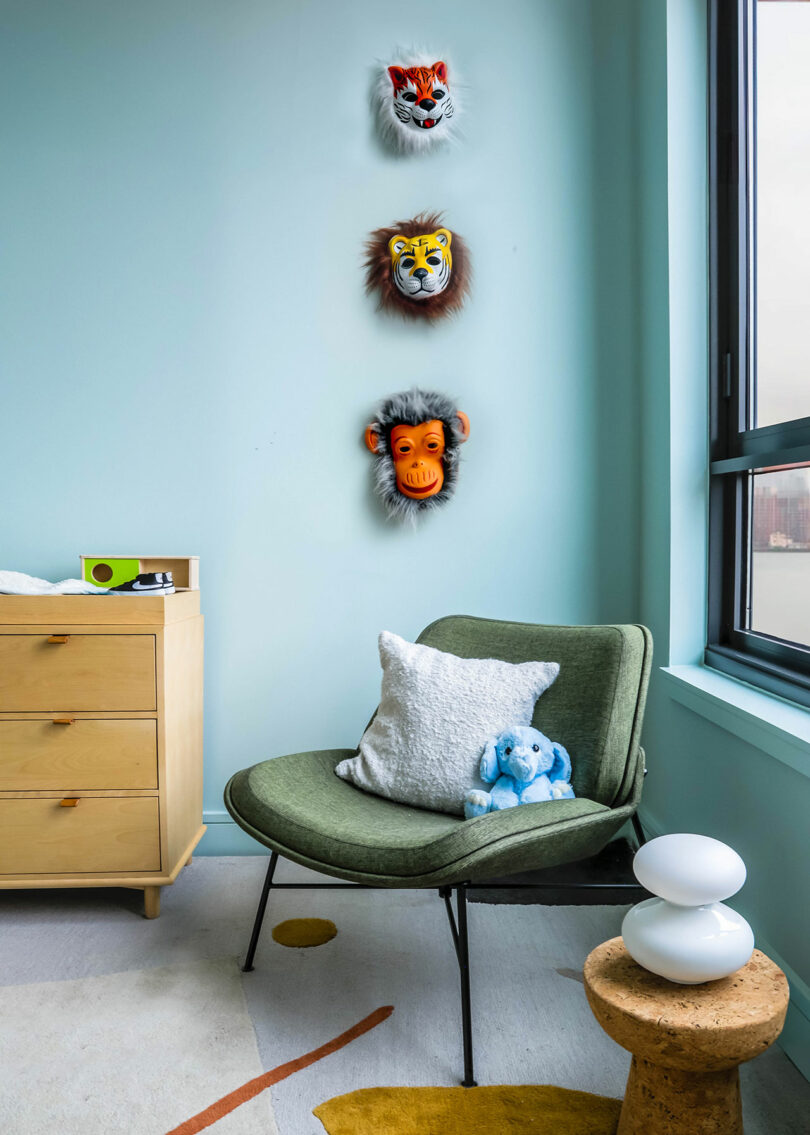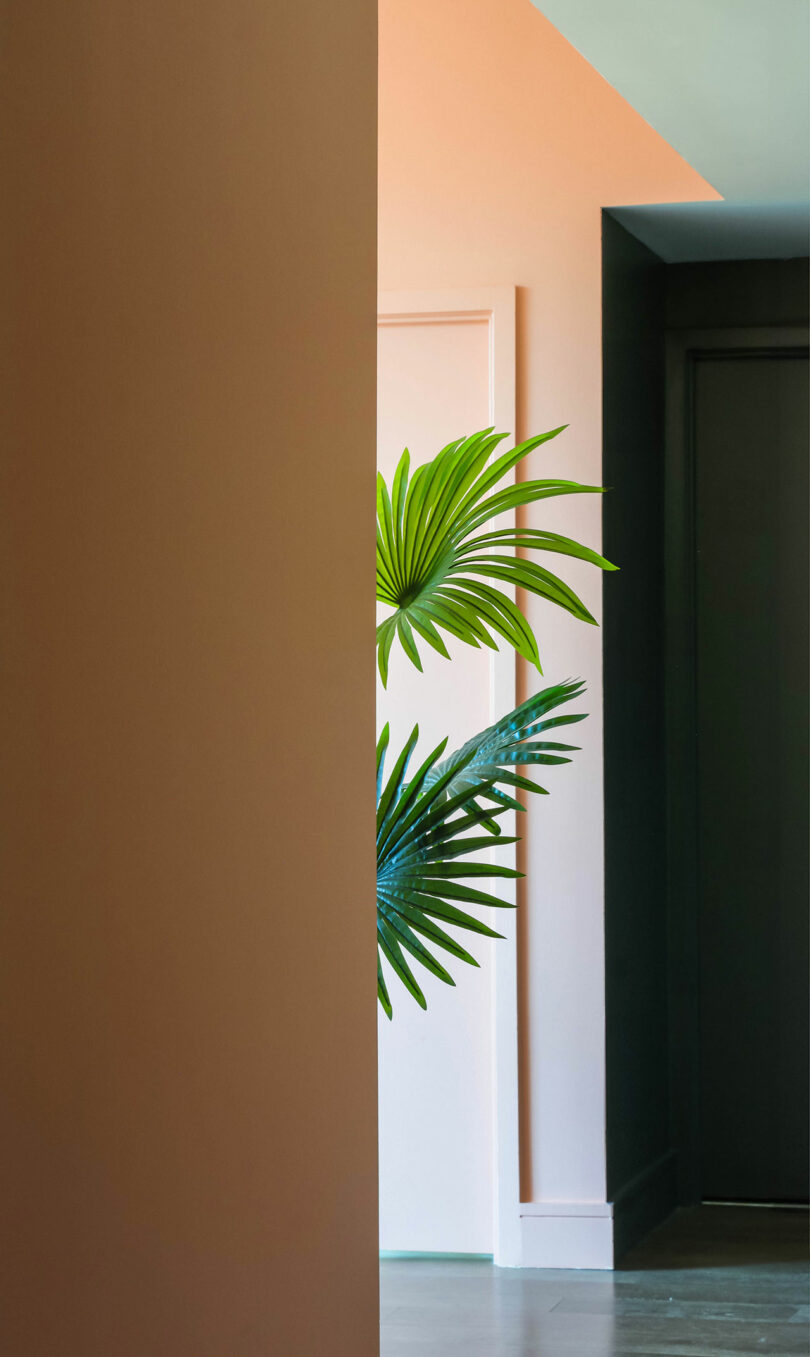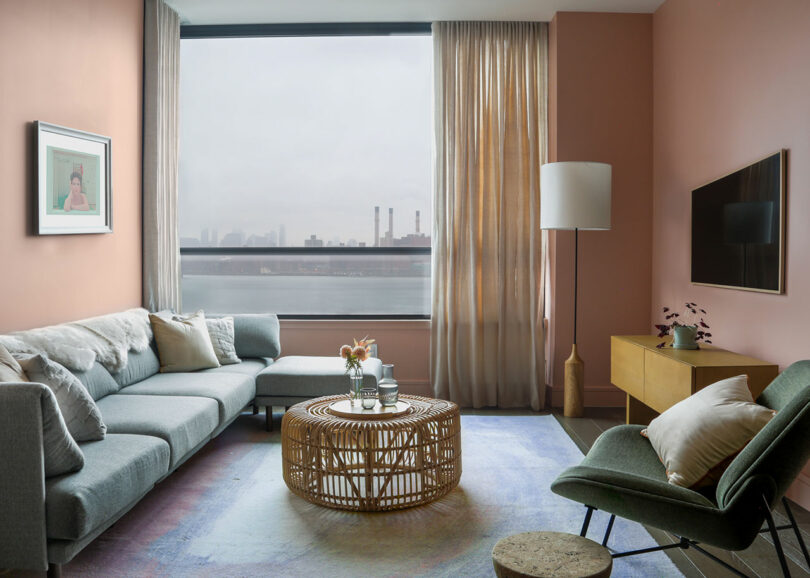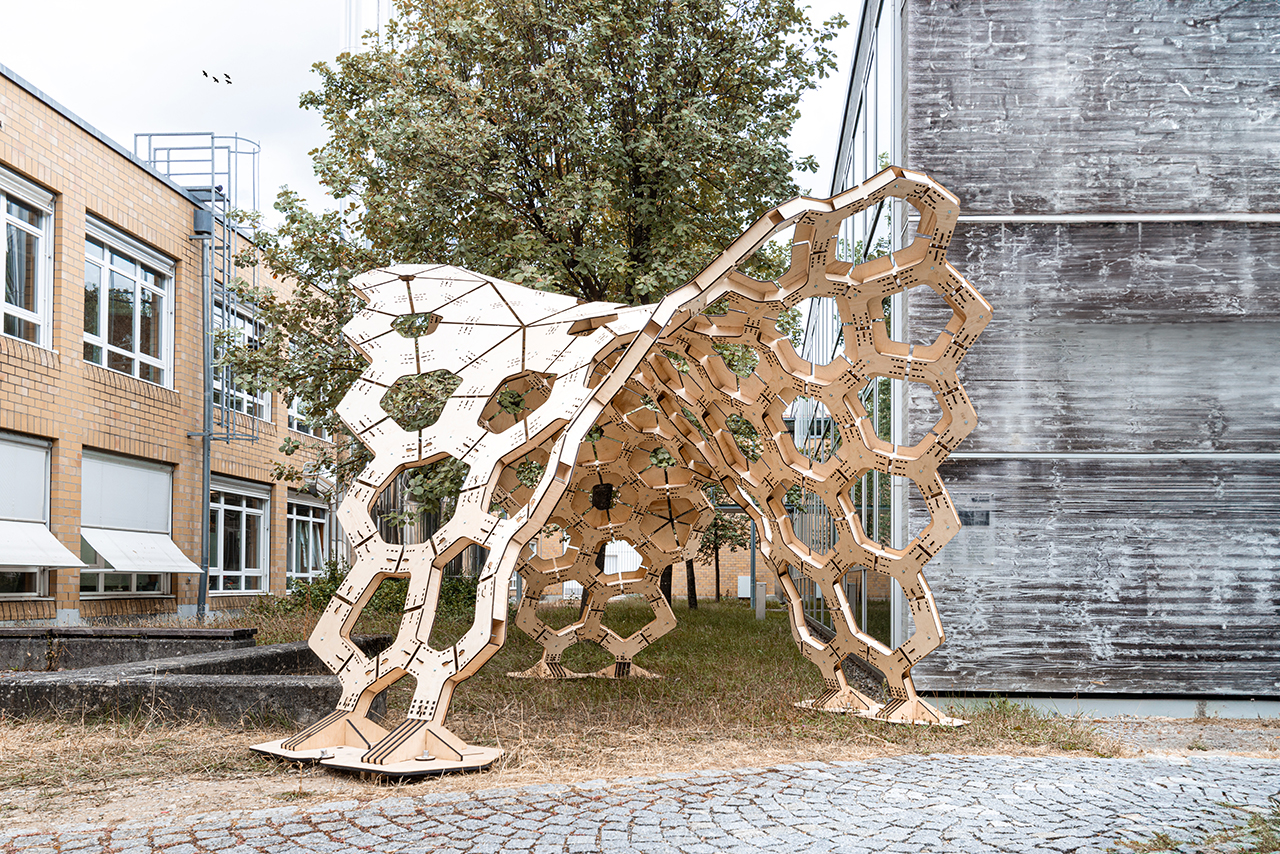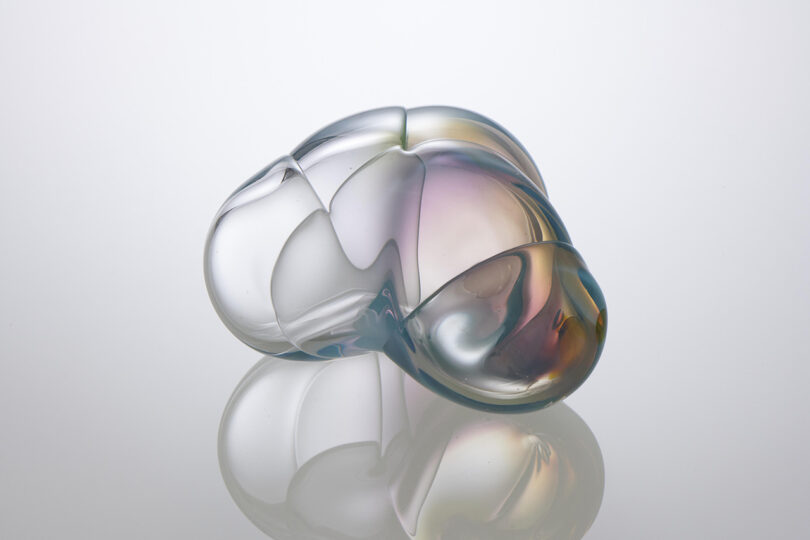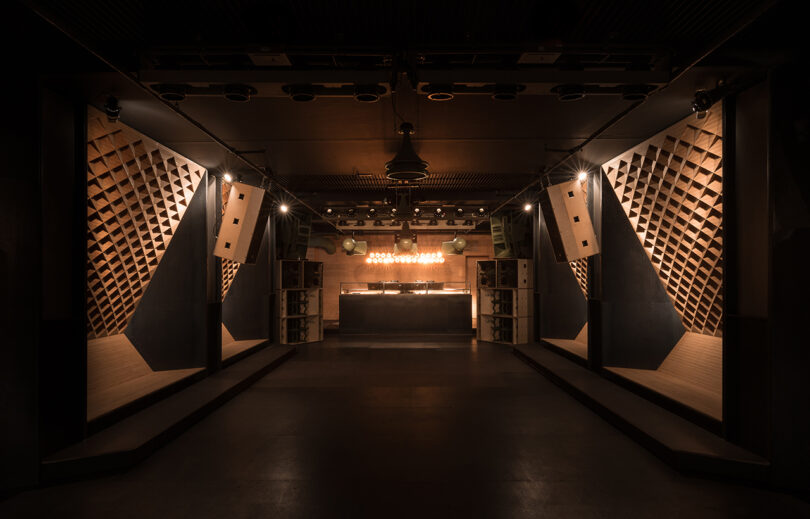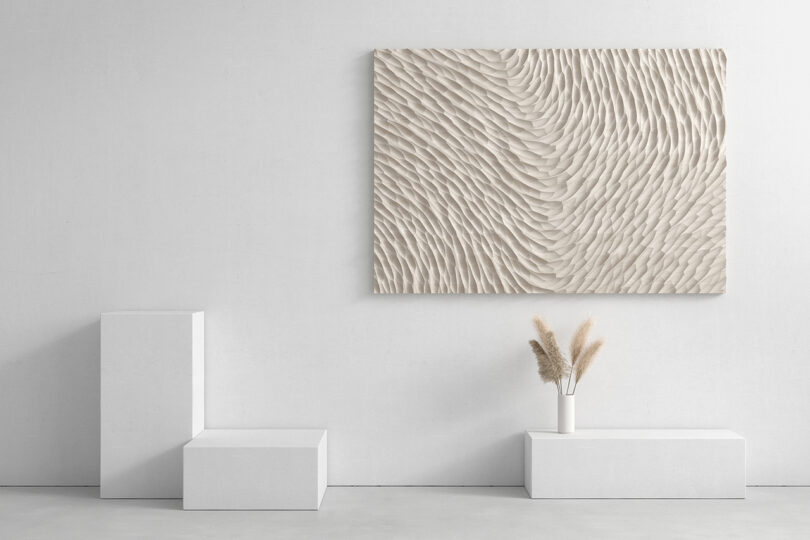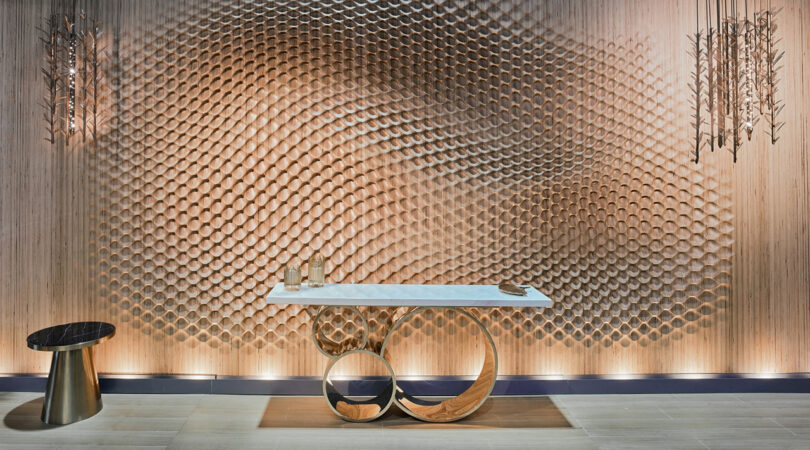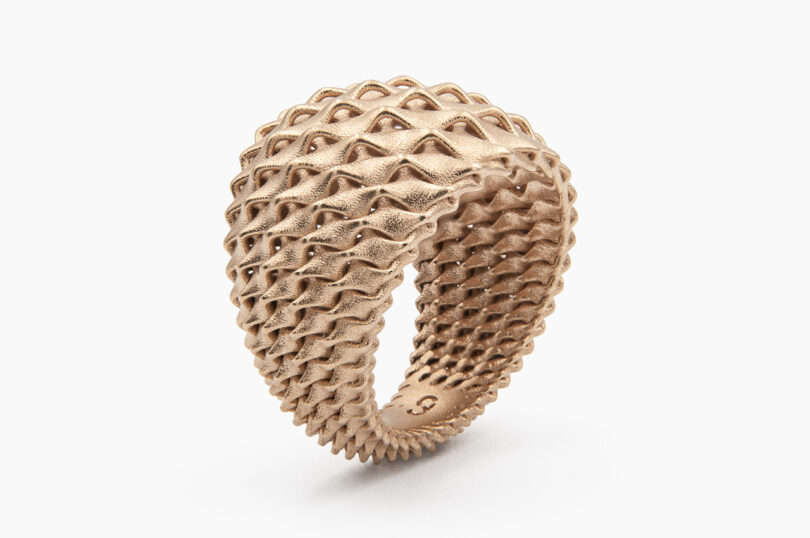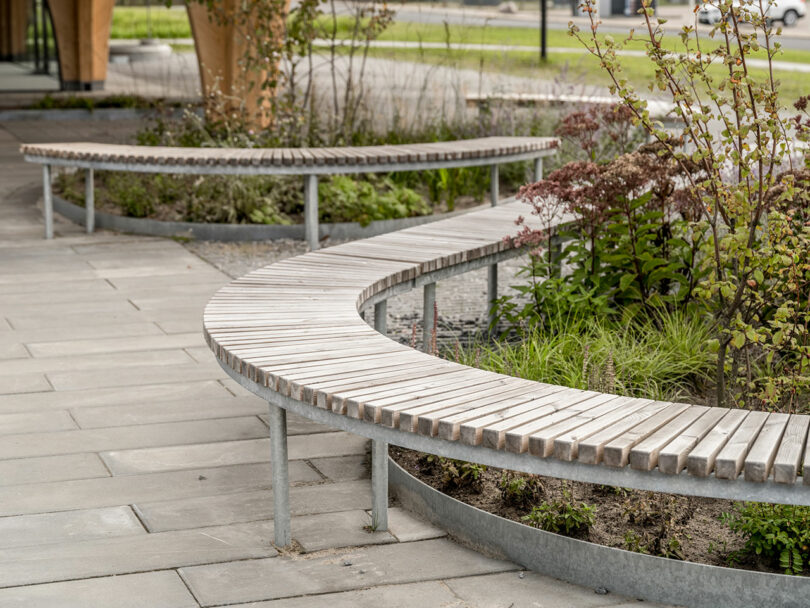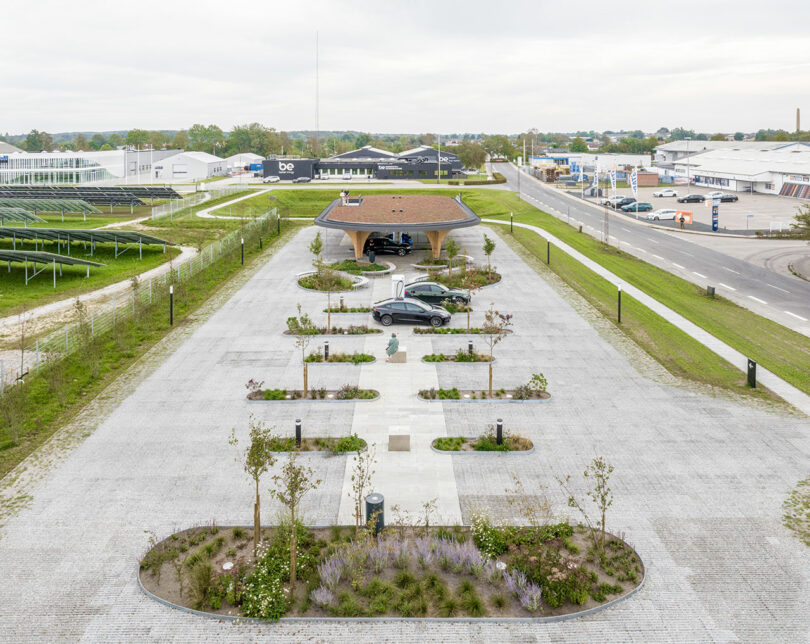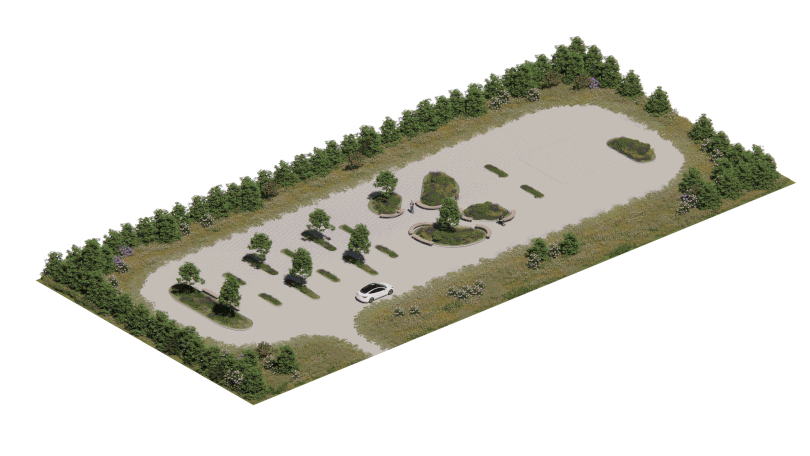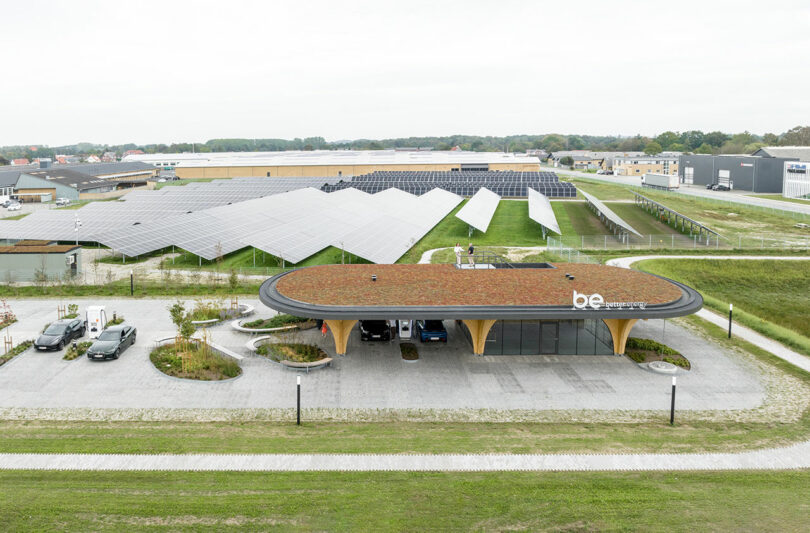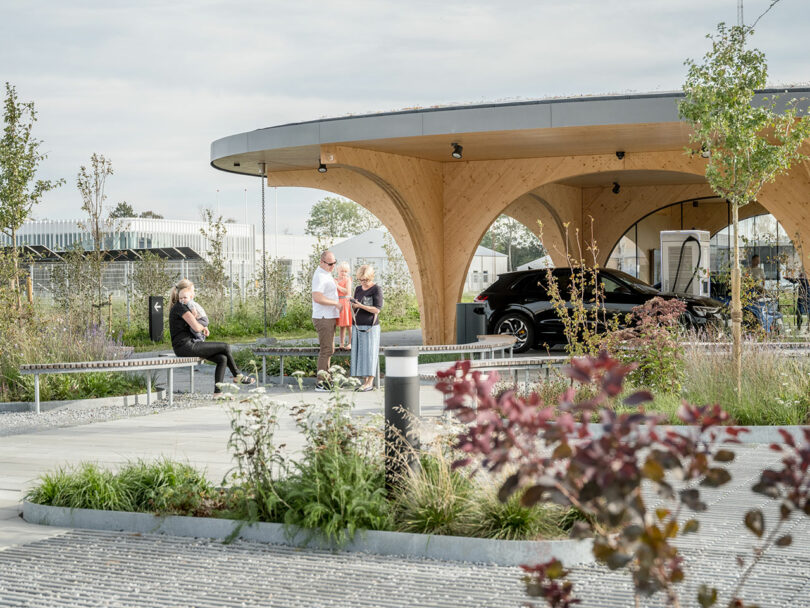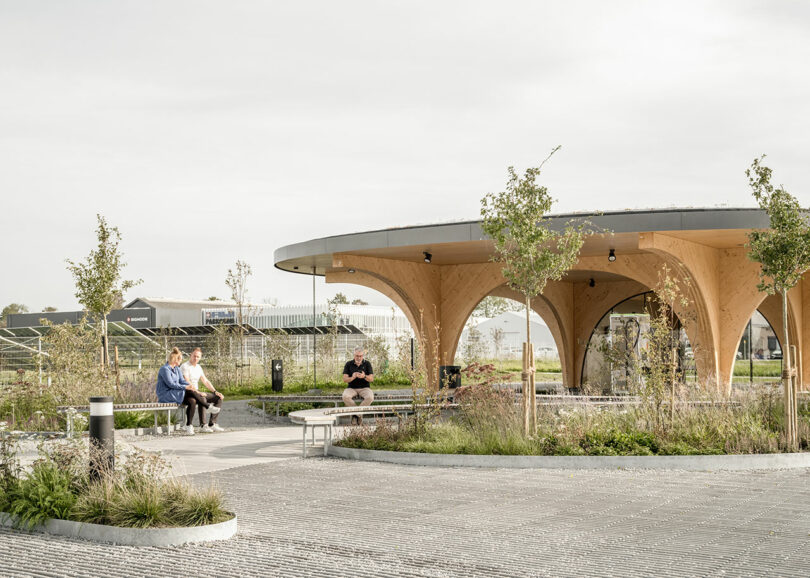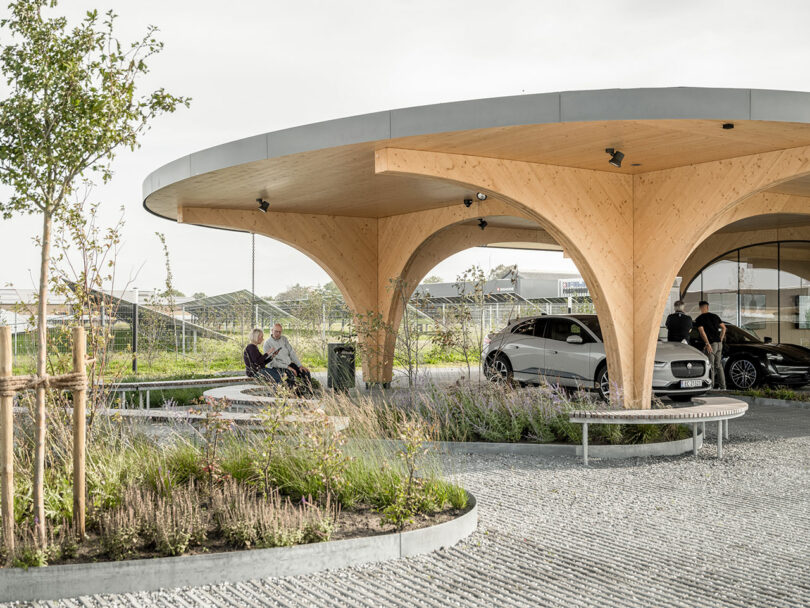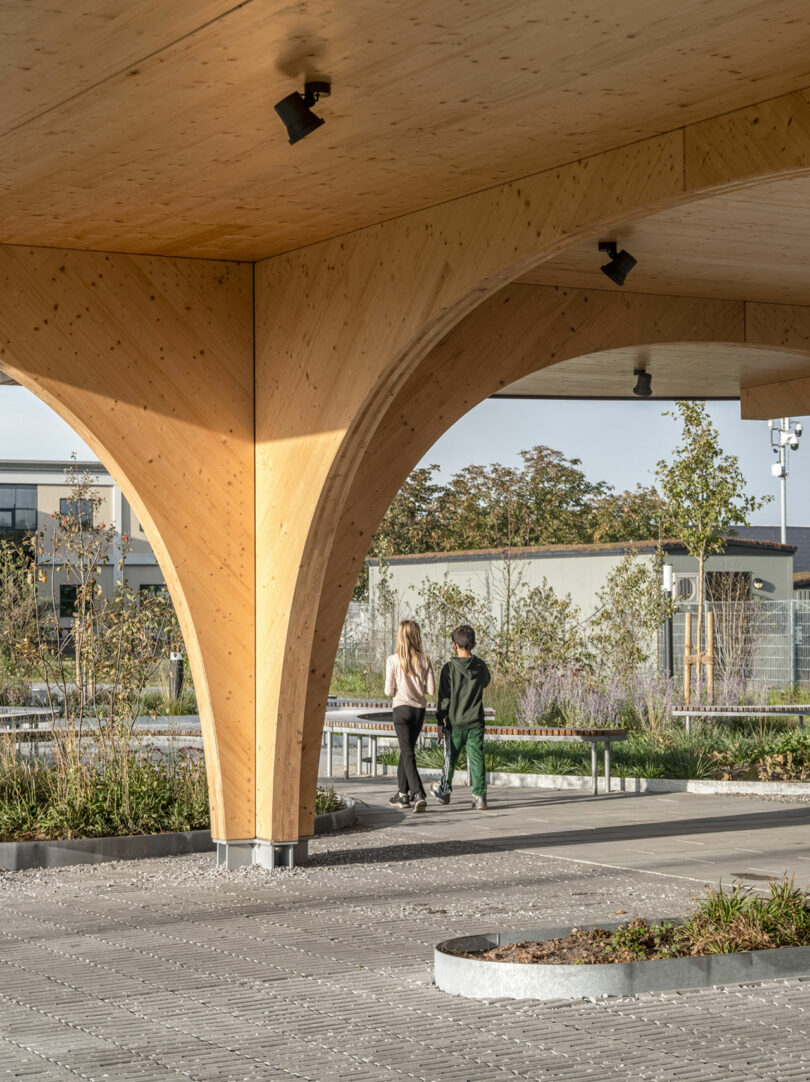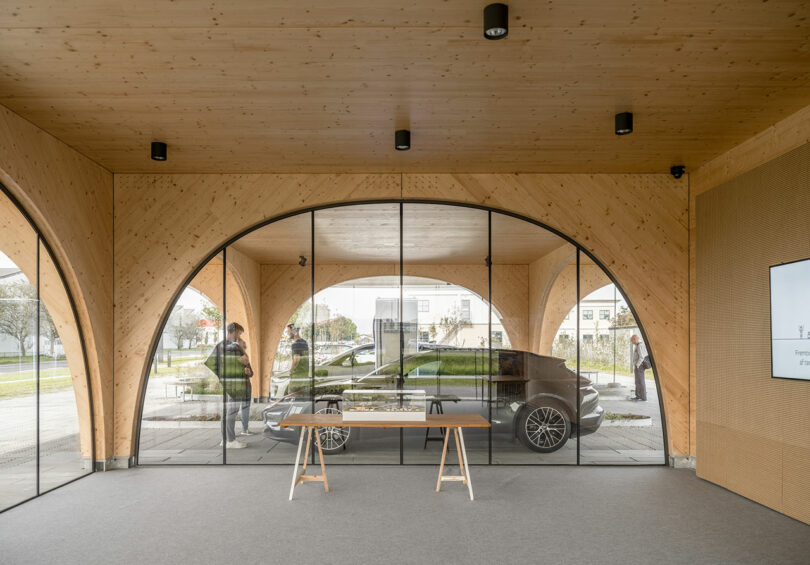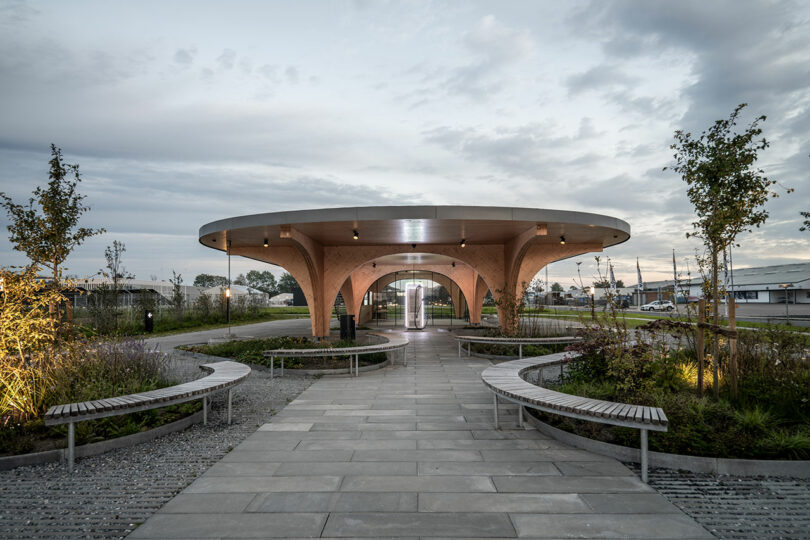Category: Architecture
An 1890s Cottage Blends Original Charm With Modern Luxury
[ad_1]
In Prospect, South Australia, Glasshouse Projects has designed a mid-century inspired extension and renovation for an 1890’s sandstone cottage – the Pear Tree House – that delicately balances the past with the present. The clients asked that the firm preserve the original character of the cottage while adding more communal spaces for entertaining, as well as increasing the private areas. In addition to the renovation, a 300-square-meter extension was built to house a new primary bedroom with en suite bathroom, a kitchen, dining room, pantry, laundry room, powder room, guest bathroom, and study. The backyard was also included with the completion of a new swimming pool and outdoor living area.
A standout feature is the cantilevered slab hovering over the courtyard and pool, which holds the new open living space with two sides of windows. Wood details flow seamlessly from the kitchen to the outdoors, framing spaces and creating a harmonious visual flow.
While the yard’s footprint is small, the design utilizes every inch for year-round entertaining. The outdoor space even includes the family’s beloved pear tree, hence the project’s name.
The minimalist yet warm kitchen features Japanese ceramic tiles, a stone island, and upper cabinets with vertically hung wood slats.
A skylight spanning the entire length of the living space brings natural light into the central part of the home, blurring the boundaries between old and new.
“Pear Tree house is responsive and a considered solution to what clients were trying to achieve. It was a small footprint, so every last bit of space needed to perform. We added texture by the use of wood, stone and concrete and pairing this with ample glass, we were able to create a radiant openness and richness which was a real contrast to its starting point,” shares Lead Architect, Don Iannicelli.
The older part of the home has become the new primary bedroom suite, complete with its own bathroom that gives nod to a luxurious Roman bath with the use of textured Turco Argento Limestone across the floors, walls, and shower area.
Glasshouse Projects kept the front facade and veranda the same as to be sensitive to the original home’s character, creating a juxtaposition with the new modern interior.
Photography by Art Department Creative, courtesy of BowerBird.
[ad_2]
Source link
Apartment West by Studio Den Den Draws From Film in Its Design
[ad_1]
Filmmaking is about the incorporation of space within narrative themes, set dressing, and a thoughtful color story as much as the practice of architecture itself. One such firm pulling from these cinematic parallels is New York-based Studio Den Den who recently completed their Apartment West project overlooking the East River in Brooklyn, New York. Every thoughtful vignette in this residential composition is staged using a mixture of Andersonian hues, Scandinavian design language, and a careful curation of personal artifacts from the homeowners meant to elicit a variety of emotions. From a sense of relief upon arrival, comfort, curiosity, excitement, and even suspense.
Helmed by J.R. and George Coffin – an architect and industrial designer respectively – the duo encourages their clients to actively engage in the design process from its inception. “We dissuade clients from using websites that tend to push the same kinds of inspirational images,” they say. “It’s much better to seek inspiration from film, fashion, art, or found materials as a way to create design concepts that are more personal. This, in turn, is also one of the more challenging but fruitful aspects of the process.” Their interdisciplinary approach helps translate and realize seemingly complex themes into buildings, backdrops, and beautiful objects.
The scene is established upon entry as guests are greeted by a Royal Tenenbaums tryptic by Queens-based Artist, M. Hogeland, and a cozy stairwell adorned with lucious tropical greens reminiscent of the transformative sets from Anderson’s adaptation of The Wonderful Story of Henry Sugar. The main level is subdued by white walls peppered with black elements and soft colors present in textiles, flowers, and additional art. Modern white oak serves as the unifying element through this double-height space taking center stage from soft rounded handles and solid paneling in the kitchen, to the slats on the recessed wall in the living room.
Two-story curtains and an egg-shaped swing accentuate the primary living space with a nod to the director’s meticulously crafted sets. The room is delineated by a large hand-tufted woven rug that seamlessly splices bright colors, warm woods, and pastel accessories in gestalt. The dining room, equally striking, is furnished with a black wooden table by Klein Agency, complementary rattan seating, and a large geometric artwork centered over the table with a captivating chandelier suspended from 18 feet above.
Guests ascend the entry staircase to a second level bridge with sight lines down a long, colorful hallway. Directly behind is a more private en suite primary bedroom while the path forward builds with a series of rising spatial actions. Like movie characters, additional bedrooms reveal vibrant characteristics that are balanced with modern white oak furniture and rugs designed and produced by Studio Den Den. Guests are in suspense until the denouement is reached with a bold, open concept media room that evokes the dreamy skylines of Asteroid City through its pink walls and sunset rug.
“My father was an Emmy Award-winning film editor. So a lot of how I think about interior design is in the transition between spaces and how the camera might move from frame to frame,” J.R. adds. “The upstairs hallway was a big focus for us. We wanted to transition between a framed view of the Manhattan skyline, with floor-to-ceiling curtains – almost like a theater set, down a colorful hallway to an intimate movie room. Following a character down a long hallway can be dreadfully boring or it can be saturated with vibrancy and suspense.”
Eclectic artwork, natural woods, anthropomorphic accessories, and playful colors – including Kelly Wearstler paints from Farrow & Ball and ethereal custom wallcoverings by Calico Wallpaper – transform this 2,100-square-foot volume into an incredible theater for living. Fin.
To see more of Studio Den Den’s work, visit StudioDenDen.com.
Photography by J.R. Coffin of Studio Den Den.
[ad_2]
Source link
Depicting the Whole Christ: Von Balthasar & Sacred Architecture – The Imaginative Conservative
[ad_1]
Depicting the Whole Christ: Von Balthasar & Sacred Architecture The Imaginative Conservative
[ad_2]
Source link
Simon Vorhammer Talks Irish Water Towers, Glass Bubbles + More
[ad_1]
Simon Vorhammer refers to himself as an architect, but his talents encompass so much more. In 2016, he established Vorhammer Computational Design, a Munich-based collective operating across different scales and typologies at the crossroads of architecture, design, and digital fabrication.
Vorhammer gravitated toward understanding general rules rather than specifics from an early age, which later steered him away from traditional architecture after attending TU Munich and ETSAM Madrid. “It was while working on my diploma thesis that I encountered parametric design,” he says. “I realized that my passion lies in developing processes and rule-based designs. This approach doesn’t conform to typical design categories, a specific scale, or even disciplines, which is exactly what intrigued me. I recognized that my niche is in merging design with technology.”
This methodology turned into Vorhammer’s career once he had the opportunity to craft his first parametric building in 2012, the Pavilion for Samsung, located in Yeosu, South Korea, for the World Expo. “To this day, I am continually amazed and grateful that my passion not only fuels my work but also sustains my livelihood. It’s a rare and fulfilling experience where my professional endeavors align seamlessly with my personal interests,” he adds.
Since then, Vorhammer has held respected positions at architectural firms such as Foster and Partners in London, AR-MA in Sydney, and LAVA, who has a network with offices in Sydney, Stuttgart, and Berlin. A few of his notable projects include Optus Stadium in Perth, the Trifolium Pavilion in Sydney, and the design of the Blitz Club in Munich. Vorhammer has also developed digital systems for brands such as BMW, OT4, and Modulor.
The architect points out his two years spent at AR-MA under Robert Beson and Gabriele Ulacco as a defining time in his career. “Robert’s and Gabriele’s unique approach instilled in me the courage to explore my niche area and apply first principles in my work,” Vorhammer says. “The experience of being part of a small, expert-led team was enlightening, teaching me the value of collaborative learning while still fostering my individual growth. This environment was crucial in equipping me with the skills and confidence necessary for my professional journey.”
What Vorhammer and VCD do today is complicated. The collective’s goal is to realize non-standard projects through the creative use of technology. It might sound simple enough at first, but the key lies in VCD’s proprietary algorithms that are developed on an individual basis. In an effort to combine technical complexity with aesthetic minimalism, the projects have to be approached from beyond what’s been already established. VCD relies on an extensive network of architects, programmers, artists, specialist planners, and manufacturing companies to build these complex structures and freeform geometries. The use of parametric 3D planning brings all parties and expertise together through the automation of design and manufacturing processes.
In 2018, Vorhammer’s interest in digital aesthetics led to the co-founding of Sian Design, a label for parametric jewelry design. Additionally, he collaborates with Prof. Dr. Matthias Beckh under the name beckh & vorhammer (B&V), focusing on projects that call for structural and computational design expertise. Currently, Vorhammer teaches Parametric Design and Digital Fabrication as an adjunct professor in Germany’s Biberach University of Applied Sciences and has previously been a guest lecturer at TU Munich and FH Munich, as well as the University of Sydney in Australia.
Today, Simon Vorhammer joins us for Friday Five!
1. Water Towers of Ireland
As an architect, I am deeply fascinated by the aesthetic qualities of Irish concrete water towers. My intrigue lies in the interplay of the material’s texture and patina with the diverse geometries employed in their construction. These monolithic, rotationally symmetrical forms often extend upwards, either gently or abruptly. Anchored firmly in the Irish landscape, these towers transcend their functional role as infrastructure elements to become genuine works of art. Their distinct shapes and harmonious integration into the surroundings render them prominent landmarks on the Irish horizon. Jamie Young’s extensive archive, “Water Towers of Ireland,” established in 2010, explores the history of these structures and their connection to various architectural eras and styles through photographs, drawings, maps, and narratives.
For the birth of our second son, Leonard, I gifted my partner a glass object created by Veronika Beckh from her ‘Intingo’ series. I am fascinated by Beckh’s distinctive technique, where spherical bubbles are skillfully embedded into hot glass, creating layered effects. The way light fractures upon these glass surfaces, casting radiant streaks, is mesmerizing. The distorted, ever-changing shapes and perspectives within the glass are particularly captivating.
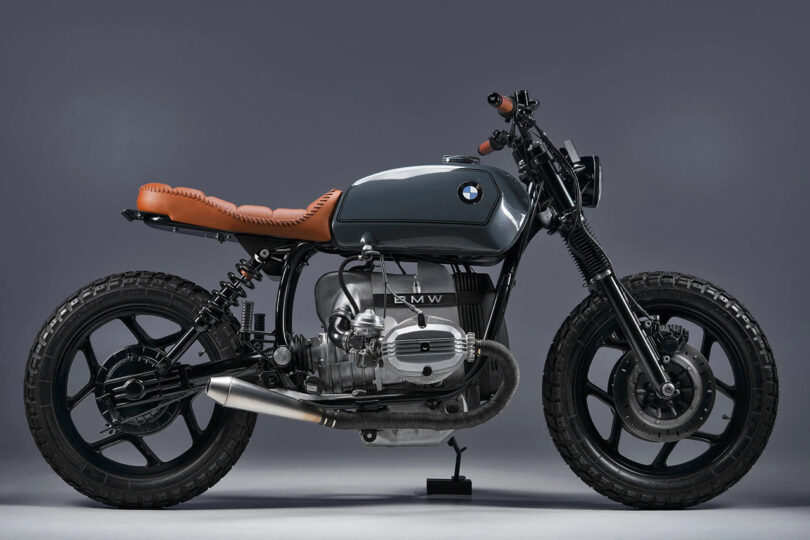
Photo: Ted Sandeen
3. BMW R80 G/S
I’d love to own an old BMW R80 G/S. The allure of this motorcycle stems from its distinctive blend of design and engineering. Its air-cooled, flat-twin boxer engine, the cornerstone of its ‘rubber cow’ ride quality (affectionately termed “Gummikuh”), is particularly appealing. This engine design not only defines the bike’s classic silhouette but also ensures a unique balance and stability that’s hard to find in modern motorcycles. I think the Gummikuh’s reputation for quirkiness and character, rooted in its mechanical design, is a significant part of its charm.
4. Playa de Cofete (Fuerte Ventura)
In winter 2019, I stumbled upon Playa de Cofete, Fuerteventura. What fascinated me was the solitude, the raw beauty of the landscape framed by mountains, and the mysterious aura surrounding “Villa Winter.” The beach’s simplicity and the sense of being far from the usual tourist spots left a lasting impression, making it a unique and quietly enchanting discovery. The memory of that day has since etched itself into my visual consciousness.
In 2016, while traveling through Patagonia, a fellow traveler recommended the “Hidden Brain” podcast. With evenings free from typical amenities, I decided to give it a shot. Shankar Vedantam’s discussions on human behavior became an unexpected but welcome addition to my journey. The podcast’s exploration of the complexities of the mind provided a thought-provoking contrast to the simple routines of backpacking. Rather than a grand discovery, it became a low-key yet enriching companion, offering a different perspective during downtime between hikes. Since that trip, it has solidified its place as my favorite podcast and a reliable source of insights.
Work by Simon Vorhammer:
Interior design for a dance music club in the former congress hall of the Deutsches Museum in Munich in collaboration with Studio Knack. Our task was the realization of a vision of a unique spatial and acoustic experience. The overall spatial concept had to fulfill high design aspirations as well as acoustic challenges. The 600 square meters are divided into two differently sized dance floors and one bar room. On the first dance floor, ‘Blitz’, which is 35m long and 8m wide, the dominating element is the technical-functional aesthetics created by the combination of steel and wood.
Formfeld Wall Panels are digitally designed surfaces on high-quality natural materials. Their relief patterns are the result of a mathematical framework. Their sound-diffusing and sound-absorbing properties contribute to balanced indoor acoustics. Formfeld Wall Panels are custom-made through skilled craftsmanship. Specially developed computer algorithms create intricate designs, which are then produced with industrial precision using machine-controlled CNC milling. They can be designed and produced in nearly unlimited sizes. The pre-fabricated Formfeld 1 wall panels are available in four different formats and materials. They can be integrated into any space as standalone individual panels or as a collection hung on the wall. Custom wall panel configurations to fit specific project requirements are also possible.
This Formfeld Structure features a gradual geometric transition from a plain surface to three-dimensional pockets. Each pocket’s position and shape align with an undulating master design, which fades towards the edges of the wall. This design has been applied in various locations, including the Adidas headquarters in Herzogenaurach, Pollmeier Massivholz, and FDC in Dubai.
Emi Cocktail Ring
Fascinated by mathematical structures and minimalist design, Antonia Frey-Vorhammer and Simon Vorhammer combine digital and analogue methods to create their jewelry. Crafted from 750 gold and marketed under the Sian Design label, their collections are inspired by nature and combine simplicity with complex geometry. Basic shapes and smooth surfaces merge seamlessly into doubly curved surfaces and grid structures that cannot be achieved by traditional methods. Each piece is first assembled from wax components formed via 3D printing. This positive shape serves as the basis for a plaster cast into which molten precious metal is poured. Meticulous reworking by hand endows each piece with a lively surface.
[ad_2]
Source link
Le Corbusier: Form, function, and modernism in architecture – Parametric Architecture
[ad_1]
Le Corbusier: Form, function, and modernism in architecture Parametric Architecture
[ad_2]
Source link
EFFEKT Turns Traditional Gas Station Into an EV Charging Park
[ad_1]
Denmark, a pioneer in sustainabilty, is now home to a groundbreaking approach to an electric vehicle (EV) charging infrastructure. EFFEKT, an innovative design studio based in Copenhagen, has transformed the conventional petrol (gas) station into a symbol of the future with the Better Energy Charge fast charging station in Sønderborg, Denmark.
The station, developed as the first pilot project for renewable energy company Better Energy, embraces a design that goes beyond functionality. Traditional petrol stations rely on carbon-intensive materials, like concrete, steel, asphalt, and glass, but Better Energy Charge integrates renewable and bio-based materials, permeable surfaces, and recreational spaces, fostering a synergy between technology, environmental consciousness, and renewable energy.
The structure’s organic shape is not only visually appealing but also serves as a powerful symbol, signaling the shift from fossil fuels to renewable energy. Inspired by curved streets, the design captures the essence of the station’s primary function while showcasing a commitment to sustainability. “We wanted the pavilion’s design to be organic and inviting, much like Danish furniture classics. We have used nature’s own materials – the construction is built in cross-laminated timber, which binds CO2 from the atmosphere throughout its entire lifespan,” EFFEKT co-founder Sinus Lynge says.
One notable feature is the station’s integration with local eco-systems, creating habitats for wildlife and plants. As spring arrives, a variety of wild meadow flora will grow and surround the charging park, providing patrons a slice of nature in the city. Lynge emphasizes the harmony between technology and nature, suggesting that architecture and infrastructure can be means to redesign human-nature relationships.
Their commitment to sustainability extends to the station’s lifecycle, by using mass timber to minimize waste. The structure’s modular grid system allows for easy expansion or reduction, reflecting adaptability to different site requirements. It also enables the disassembly and repurposing of building components, contributing to a circular economy.
Better Energy Charge incorporates a dynamic pricing structure, incentivizing users to charge their vehicles during peak times for renewable energy. This not only offers cost savings to users but also addresses long-standing issues such as energy storage, ensuring that the energy powering EVs is genuinely green.
Moreover, the station provides more than just essential charging facilities. It includes “quality services and recreational areas in natural surroundings for drivers and passengers to rest and relax,” says Lynge. The station’s eco-friendly features, such as a green sedum roof, flower beds, and permeable paving, blur the boundaries between green surroundings and driving areas.
Visitors can access the green rooftop for a view of Better Energy’s R&D solar park or explore the showroom for more information on renewable energy.
As the world looks toward a greener future, this charging park serves as a beacon, demonstrating that thoughtful design can redefine our relationship with both technology and the environment.
For more information on the Better Energy Charge, visit effekt.dk.
Photography by Rasmus Hjortshøj.
[ad_2]
Source link

